
The ASUS ProArt GeForce RTX 4080 16GB OC graphics card stands out with its low-key yet elegant design, boasting three Ø9 cm axial fans, six heat pipes, and a 300 mm long, 2.5 Slot cooling module. Utilizing NVIDIA’s Ada Lovelace architecture, this RTX 4080 core effortlessly caters to professional multimedia demands. It impresses in the gaming realm as well, delivering an excellent average score of 99.4 fps in 4K real-time ray tracing tests. Whether for work or play, this graphics card is highly efficient and stunning to look at!
Here are the detailed specifications for the ASUS ProArt GeForce RTX 4080 16GB OC graphics card:
- Graphics Core: NVIDIA GeForce RTX 4080
- Bus Configuration: PCI Express 4.0 x16
- Memory Specifications: 16GB GDDR6X
- Memory Clock: 22.4 Gbps
- Memory Interface: 256-bit
- CUDA Cores: 9728
- Tensor Cores: 304
- RT Cores: 76
- GPU Clock: Overclocking mode at 2625 MHz / Default mode at 2595 MHz (Boost)
- Display Outputs: 1x HDMI 2.1a, 3x DisplayPort 1.4a
- Multi-Screen Output Maximum: 4
- Dimensions: 300 x 120 x 50 mm
- Recommended Power: 750W
- Power Supply Interface: 1x 12VHPWR 16-Pin
- Slot Occupancy: 2.5 Slot
This hardware setup offers a powerful and versatile solution for both professional applications and high-end gaming experiences.
Black gold high-quality appearance ASUS ProArt GeForce RTX 4080 16GB OC graphics card out of the box
ASUS unveils its sophisticated and understated ProArt series, tailored for creative professionals. Unlike the dynamic aesthetics of the ROG series or the rugged, military-inspired TUF designs, the ProArt adopts a muted black palette highlighted with gold accents. The design is refined, but that doesn’t compromise its performance.
The ASUS ProArt GeForce RTX 4080 16GB OC is crafted with three central tenets in mind: compactness, power, and innovation. The cooling module has been streamlined to a mere 2.5 slots, ensuring easier installation without sacrificing its dependable and silent cooling efficacy. With the power of NVIDIA’s Ada Lovelace architecture, this graphics card boasts 304 fourth-generation Tensor Cores and 76 third-generation RT Cores. In its overclocking mode, the GPU can be boosted from a standard 2595 MHz to 2625 MHz. Complementing this is its 256-bit 16GB GDDR6X graphics memory, underscoring the blend of style and substance in the ProArt series.
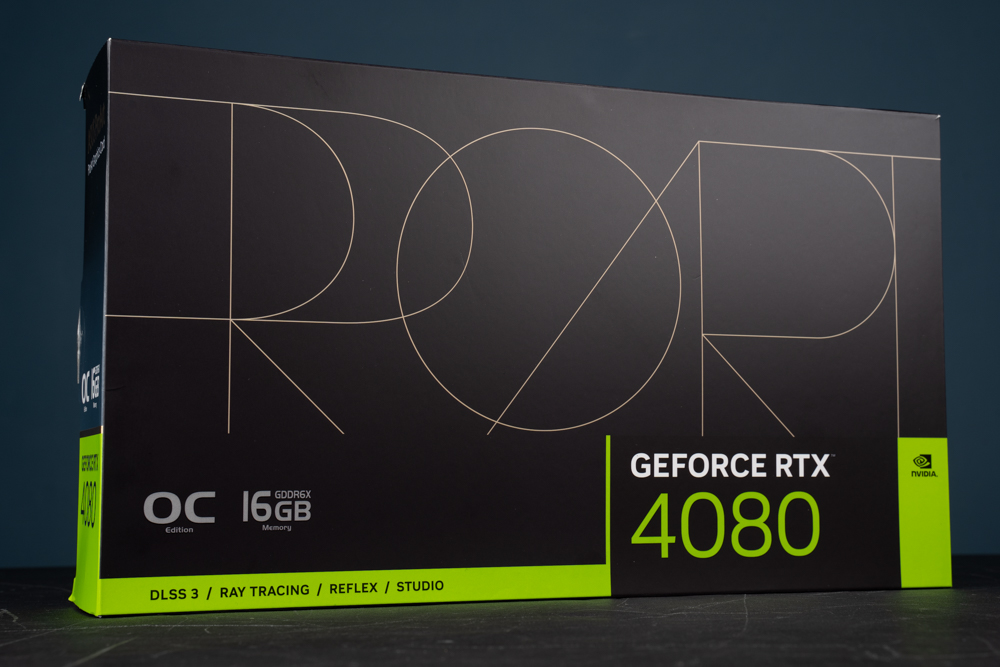
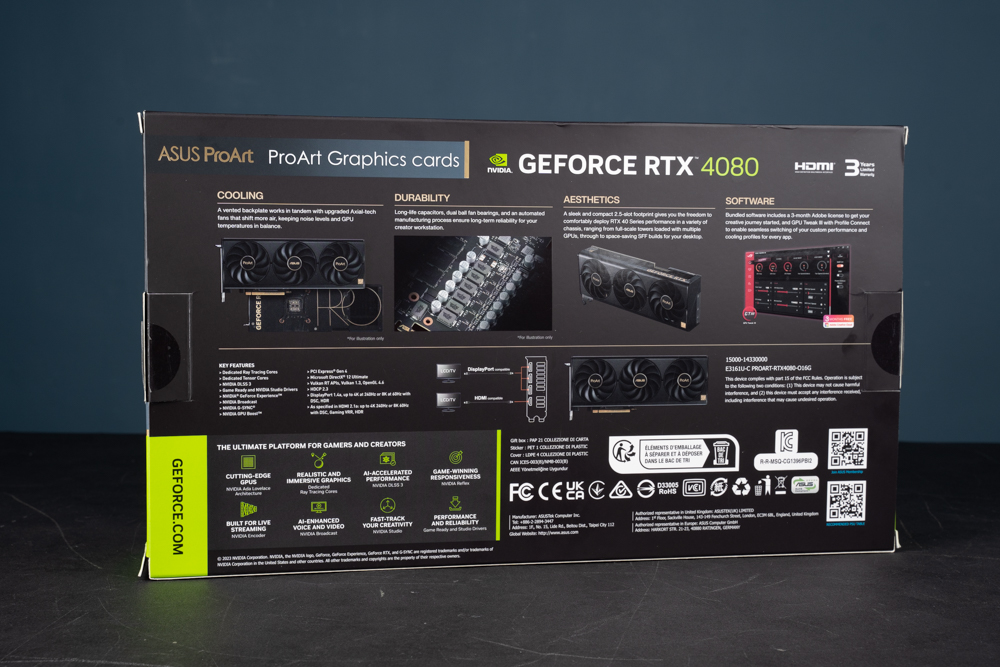
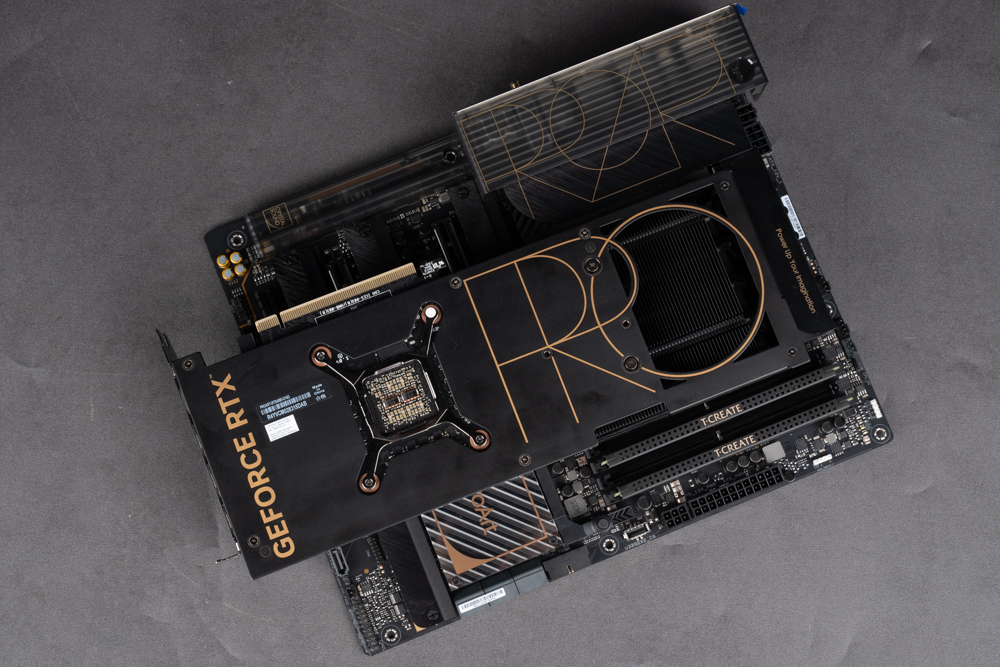
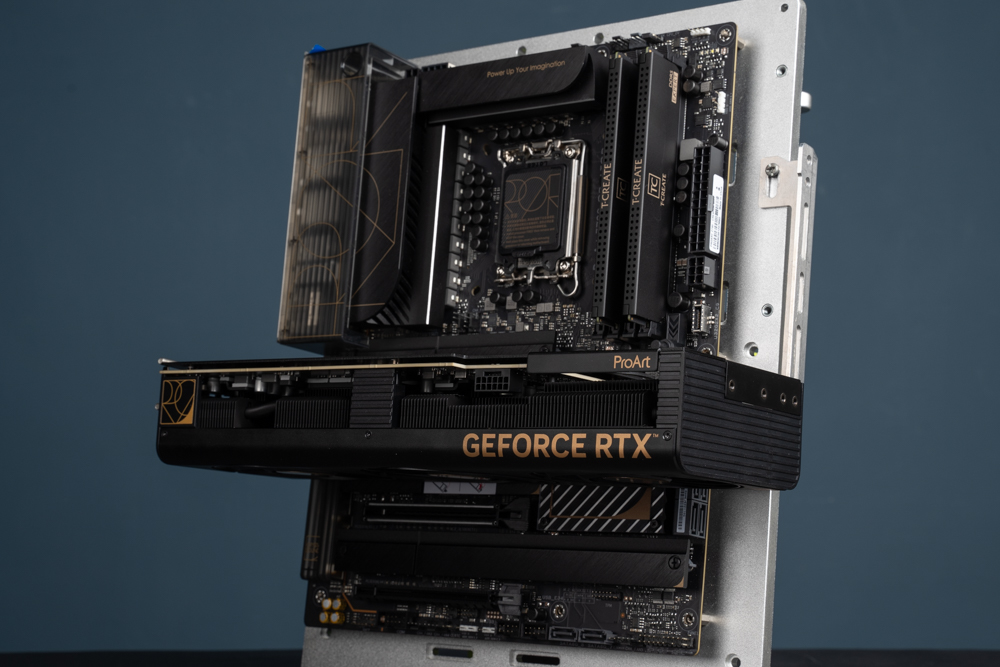
The ASUS ProArt GeForce RTX 4080 16GB OC graphics card showcases a sleek design, with black as its primary color accented by dark gold font printing, giving a refined overall appearance. Measuring 300 x 120 x 50 mm, the thickness of the card is compressed to fit within 2.5 slots. This makes it distinct from other, more bulky RTX 4080 graphics cards on the market. The relatively compact 30 cm length and 2.5-slot thickness provide a significant advantage, especially for smaller computer cases or those with limited space, making it a suitable choice for various setups.
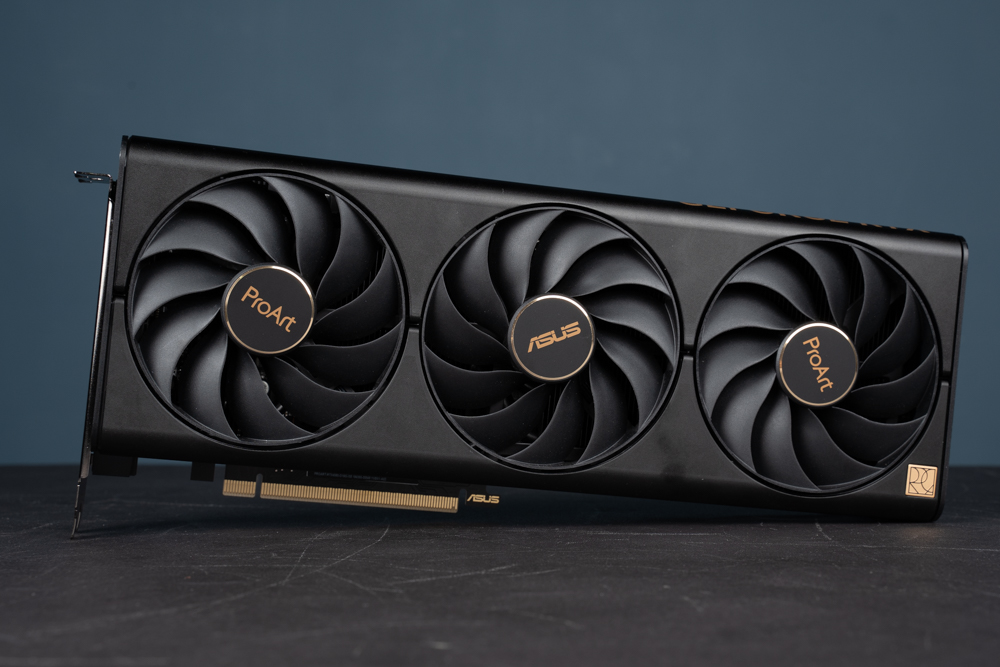
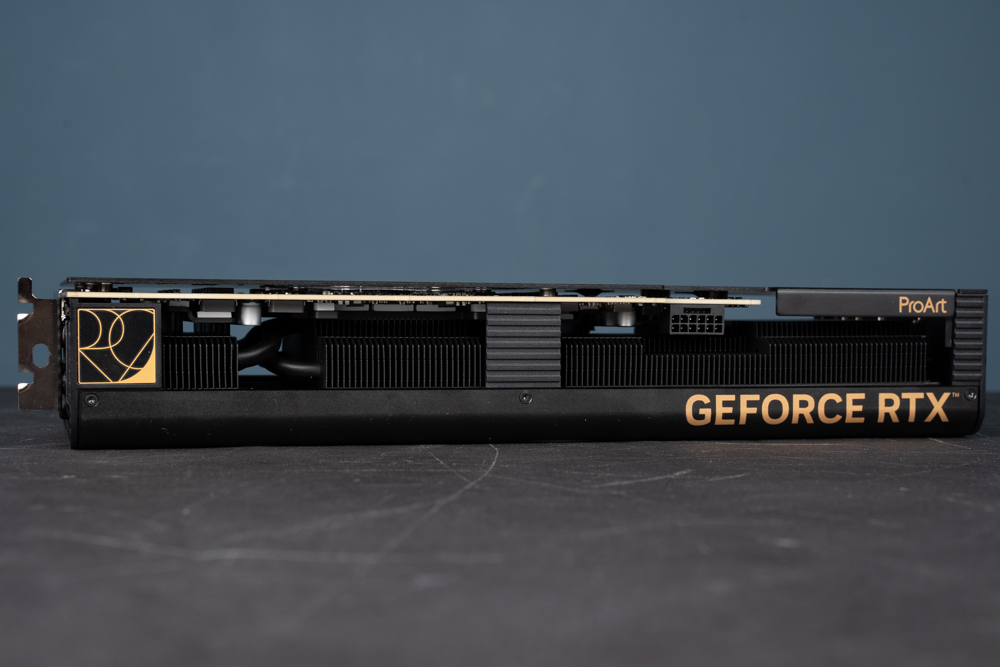
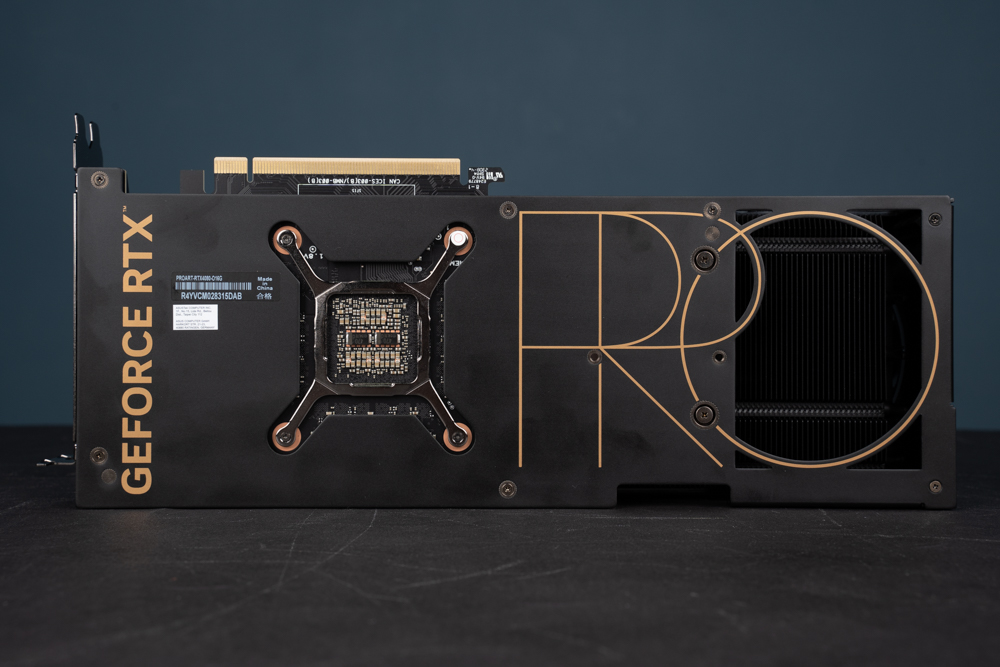
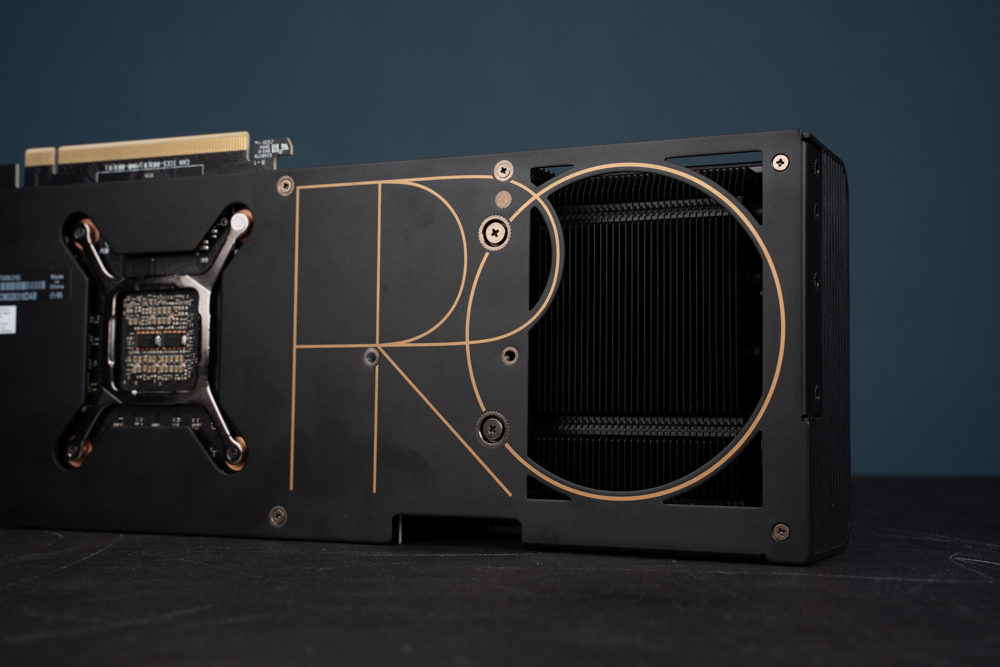
The cooling system of the ASUS ProArt GeForce RTX 4080 16GB OC graphics card is comprised of three Ø9 cm double-ball axial fans, engineered with innovative design choices to optimize performance. The central fan rotates clockwise, while the other two fans rotate counterclockwise. This unique configuration minimizes air turbulence and boosts airflow.
The 0dB function is an added feature that contributes to noise reduction. When the temperature of the graphics card is below 50°C, the fans cease operation, creating a virtually silent experience. If the temperature rises above 55°C, the fans automatically restart. This responsive system allows for a tranquil low-load experience, offering both efficiency and quiet operation.
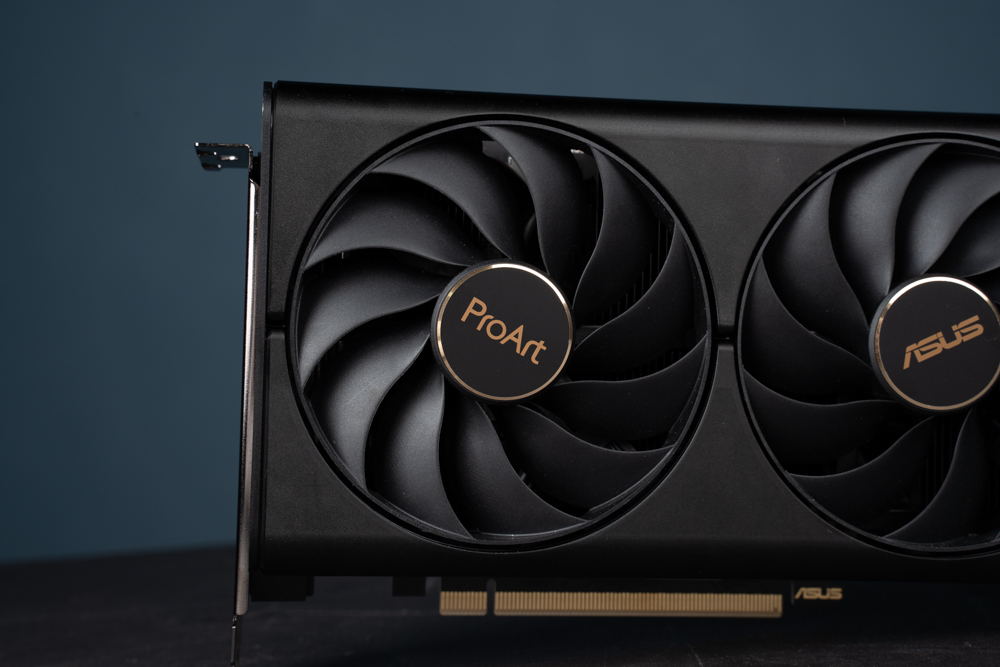
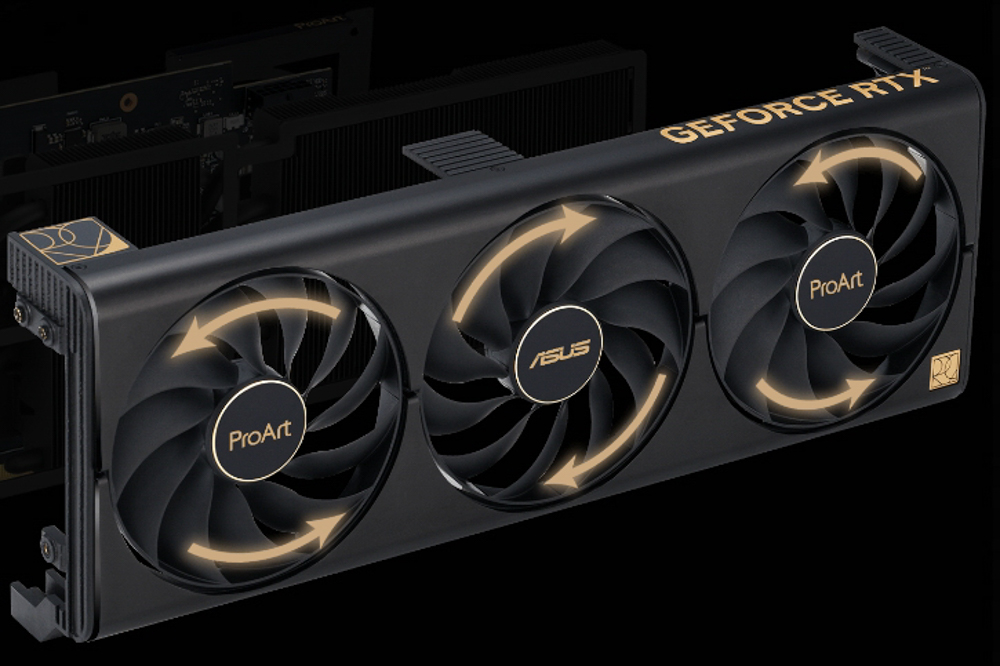
The ASUS ProArt GeForce RTX 4080 16GB OC requires a 12+4 Pin 12VHPWR connection and the official recommendation is to pair it with a power supply of 750W or higher. For those who have not yet acquired a power supply that natively supports 12VHPWR cables, the graphics card package includes a 2x PCIe 8-Pin to 12VHPWR 16-Pin converter. This allows users to connect the power supply cable easily, ensuring compatibility and convenience for different power supply configurations.
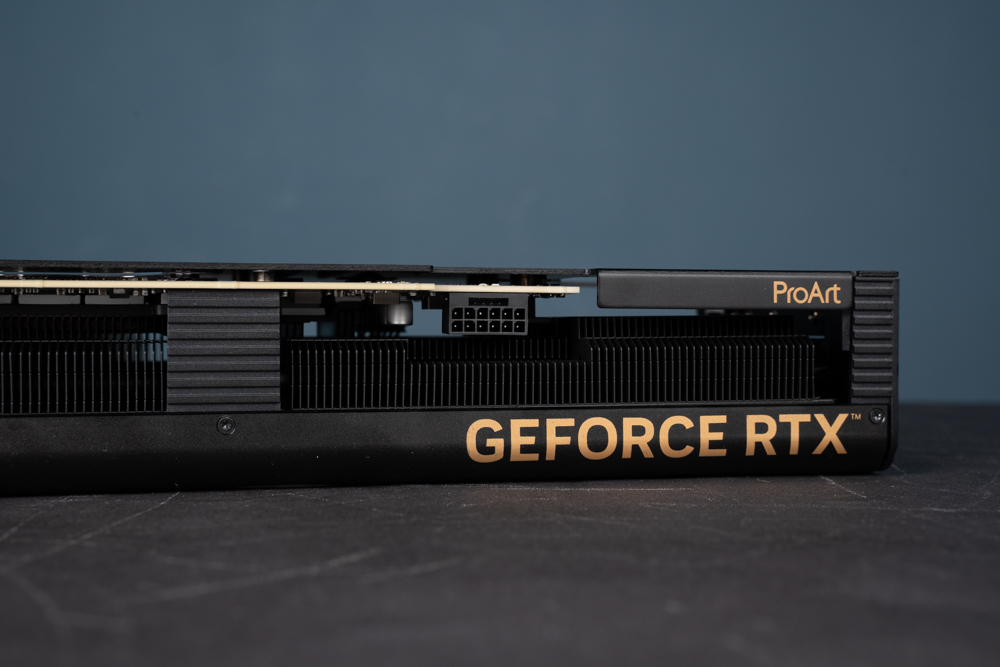
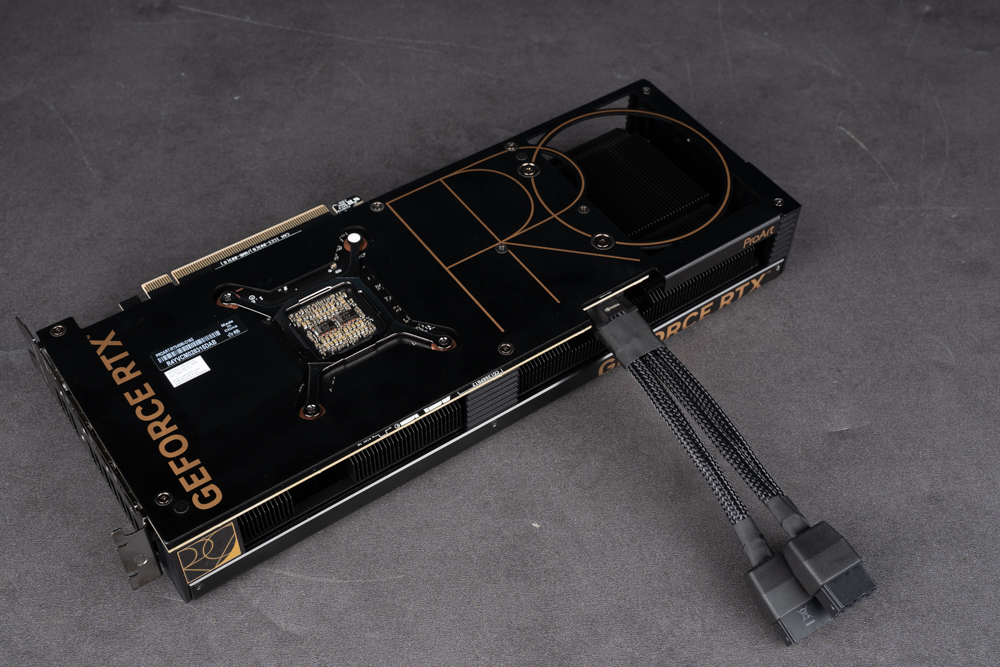
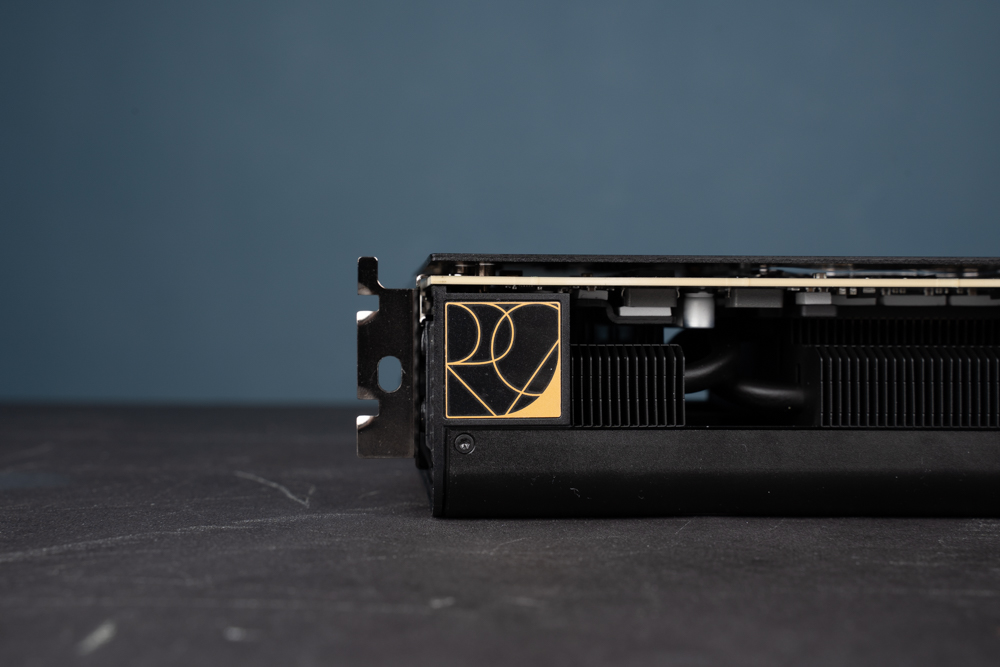
The ASUS ProArt GeForce RTX 4080 16GB OC offers a screen output interface that includes three DisplayPort 1.4a connectors and one HDMI 2.1a port. This configuration supports simultaneous output to up to four screens, and it is capable of handling 8K resolution (7680 x 4320) displays. The versatile connectivity options enable both high-quality visuals and multi-screen setups, catering to a range of professional and recreational needs.
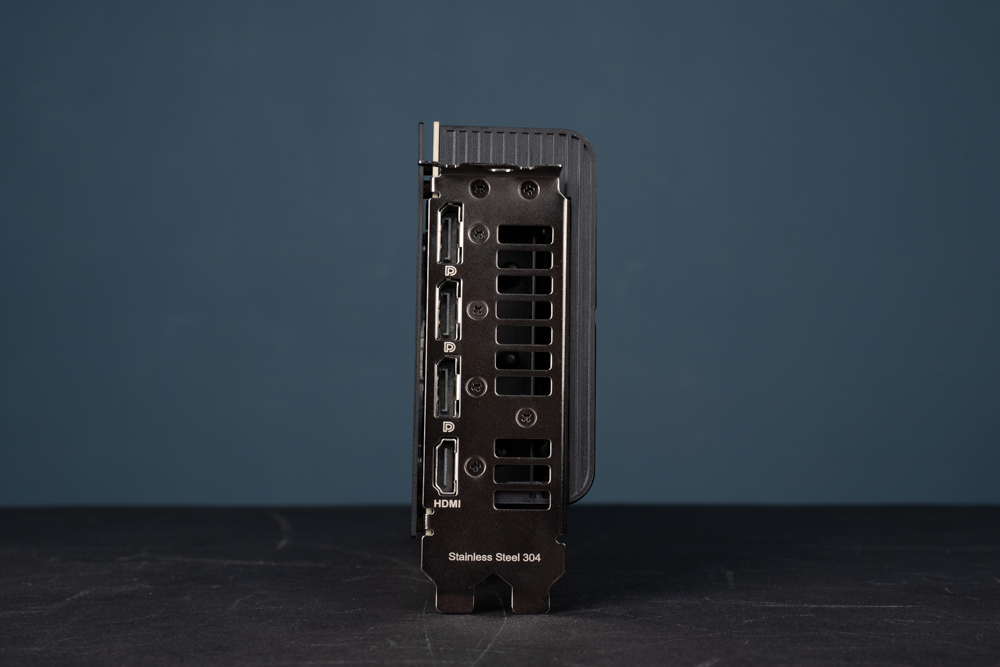
Upon disassembling the ASUS ProArt GeForce RTX 4080 16GB OC graphics card, it’s apparent that it features a shorter version of the PCB, with all heat dissipation fins given a blackened finish. The heat dissipation module is designed with six heat pipes and a nickel-plated vapor chamber, all working in tandem to ensure efficient heat conduction.
The power supply chip and the graphics card memory are fitted with heat conduction pads, which assist in dissipating heat effectively. This intricate cooling structure reflects a well-thought-out design that combines aesthetics and performance, ensuring optimal cooling for the powerful components housed within the card.
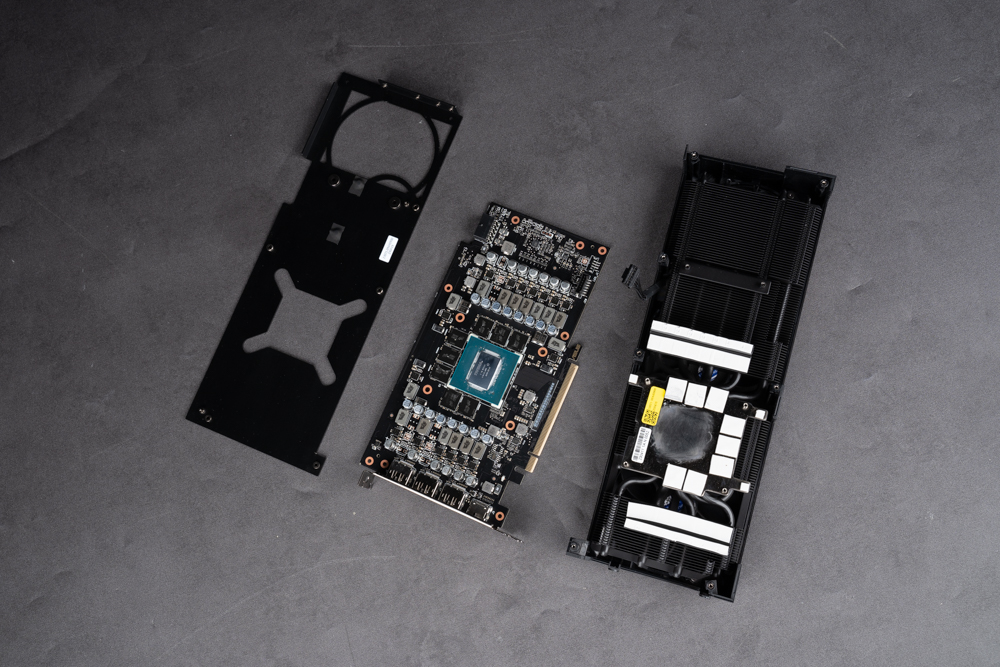
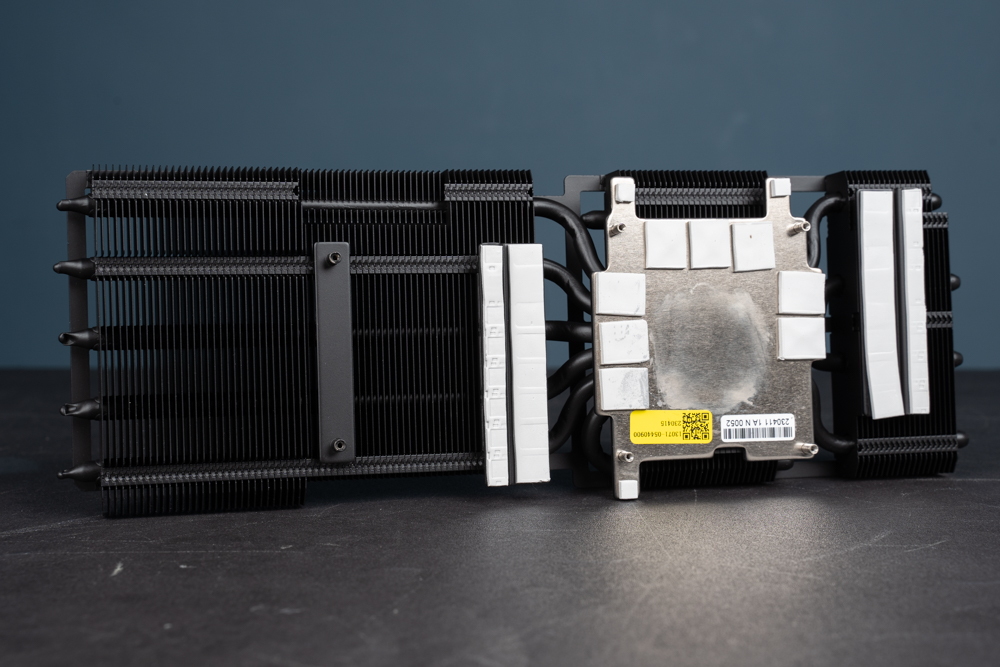
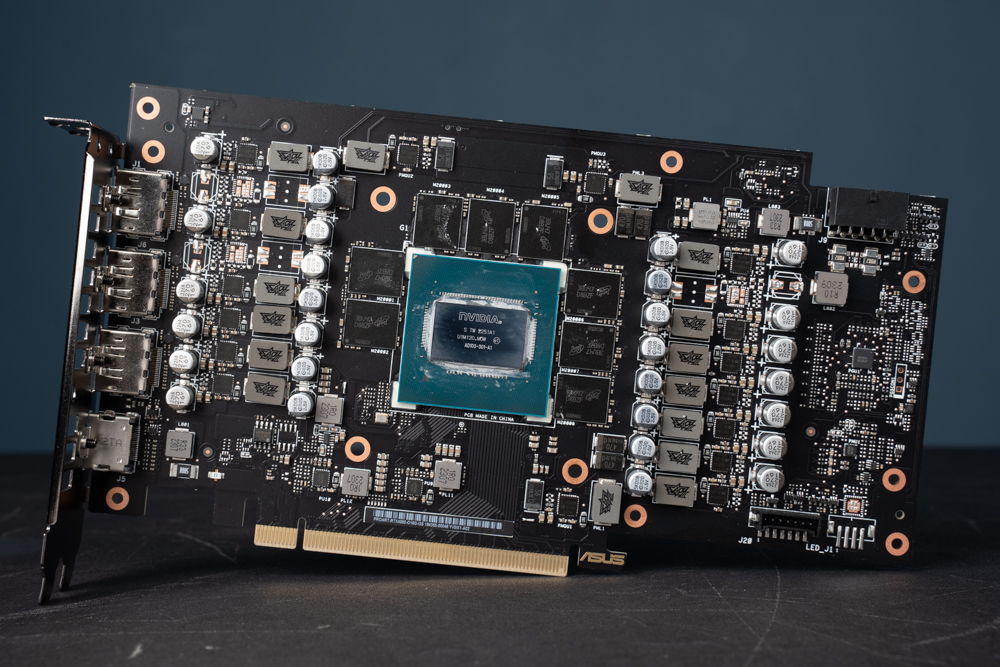
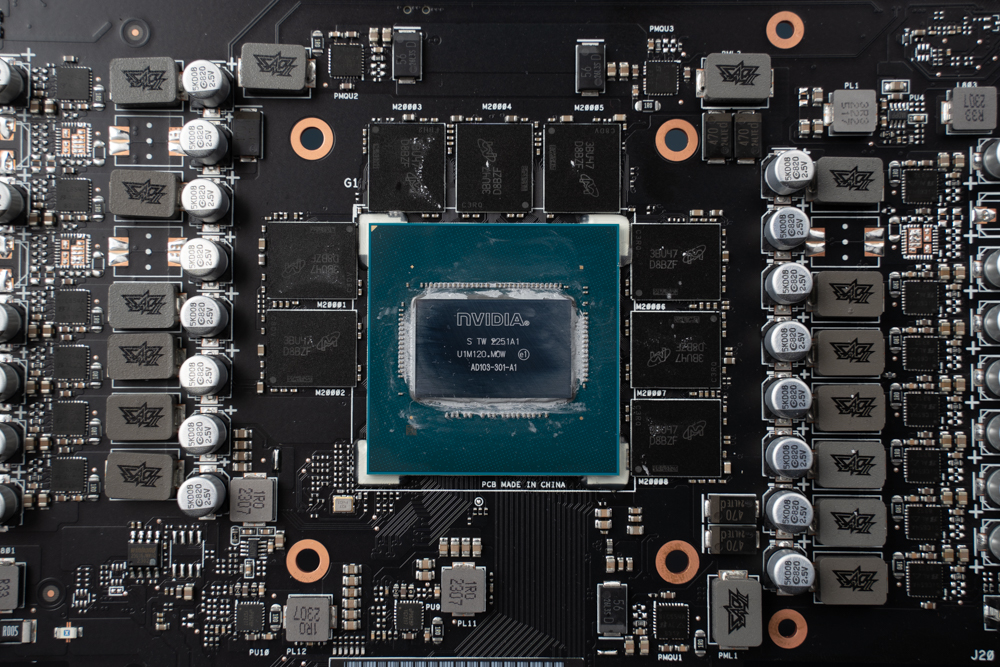
Included within the ASUS ProArt GeForce RTX 4080 16GB OC graphics card box are several valuable accessories, sometimes referred to as “faith” accessories. These additions to the package ensure that users have everything they need to set up and enjoy the graphics card. The included items are:
- A 2x PCIe 8-Pin to 12VHPWR 16-Pin power supply cable, facilitating connection to various power supply configurations.
- A graphics card support frame and screwdriver, aiding in the secure installation of the card within the system.
- A ProArt collection card, an exclusive item for fans of the ASUS ProArt series.
- A Velcro strap, provides an extra tool for cable management or other organizational needs.
These accessories underscore ASUS’s commitment to providing a comprehensive package that enhances the user experience, both in terms of installation and daily usage.
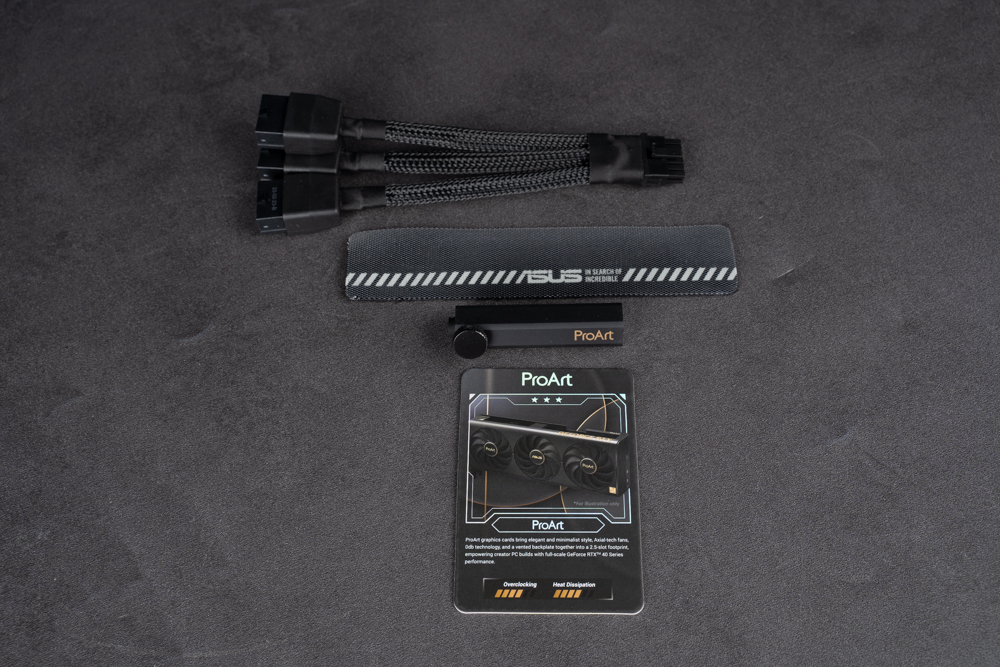
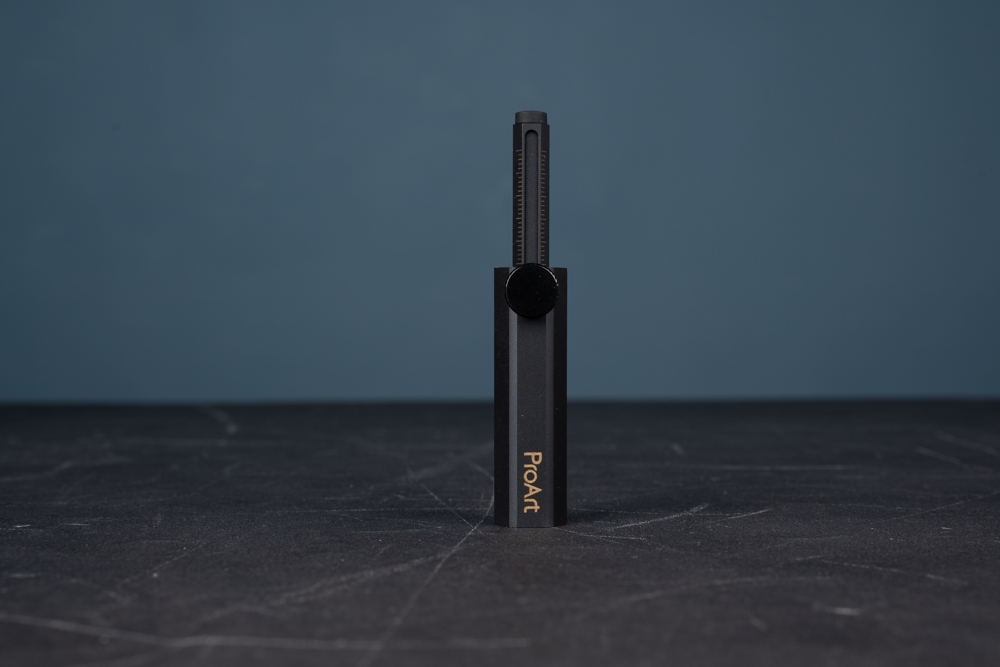
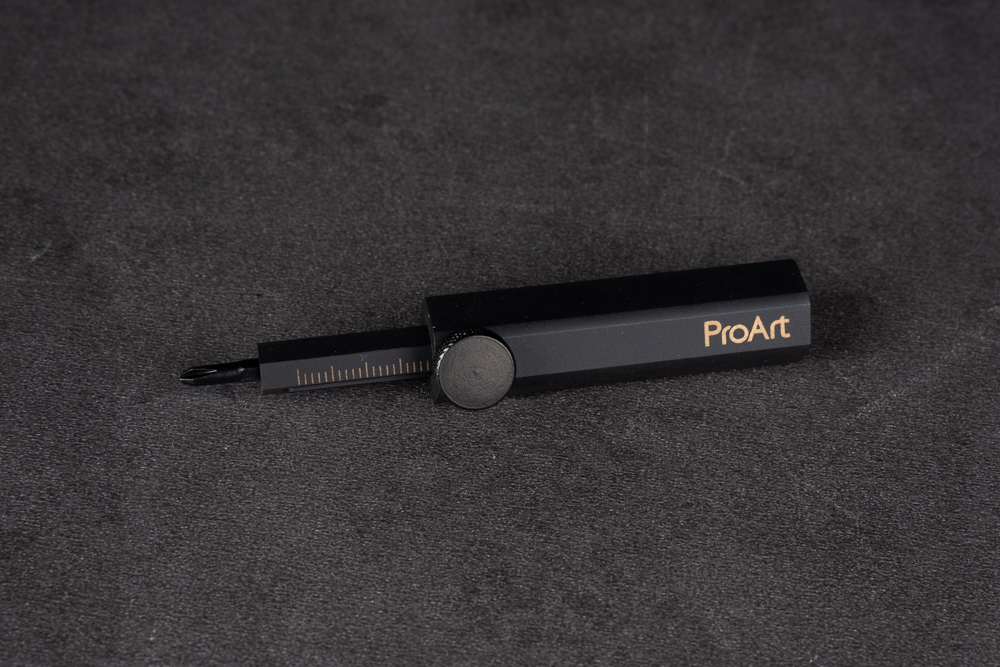
GPU Tweak III graphics card settings can be done by me
ASUS offers its specialized GPU Tweak III software to accompany the ProArt GeForce RTX 4080 16GB OC graphics card. This software serves as a powerful tool for monitoring graphics card information and managing overclocking functions.
Within GPU Tweak III, users have access to three preset modes that enable quick switching between different performance profiles: a standard preset, an overclocking mode, and a mute or silent mode. These options provide flexibility and ease of use for different scenarios.
For gamers and enthusiasts looking for more hands-on control, the software also allows manual adjustments to various parameters for custom overclocking configurations. This ensures that users can fine-tune the performance to match their specific needs and preferences.
The software includes a graphics card monitoring function, giving real-time insight into the card’s performance and condition. A ROG version of GPU-Z is also available within the software, enabling users to thoroughly check the specifications of the graphics card.
These features collectively enhance the user’s ability to understand, control, and optimize their graphics card performance, whether for gaming, professional work, or other demanding tasks.

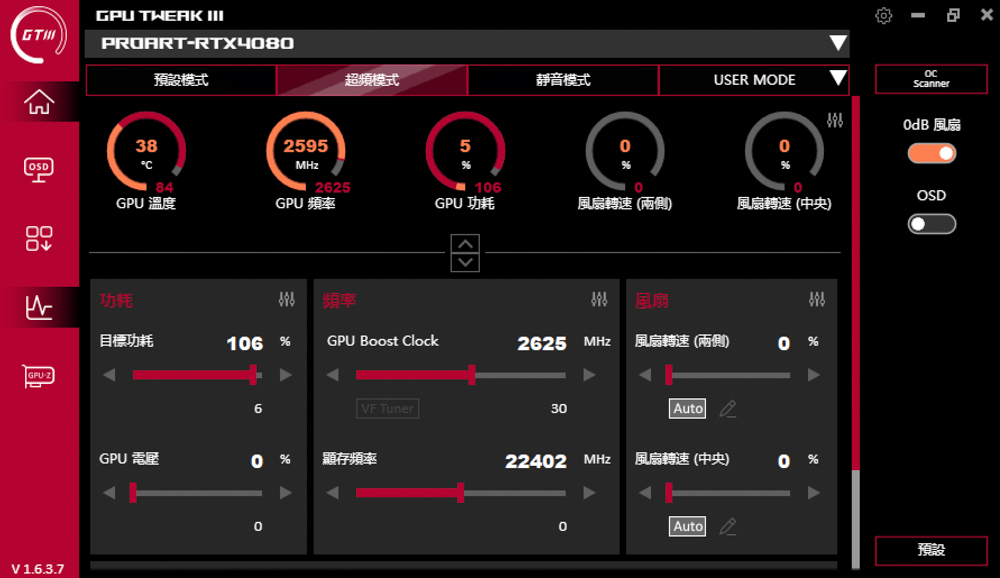
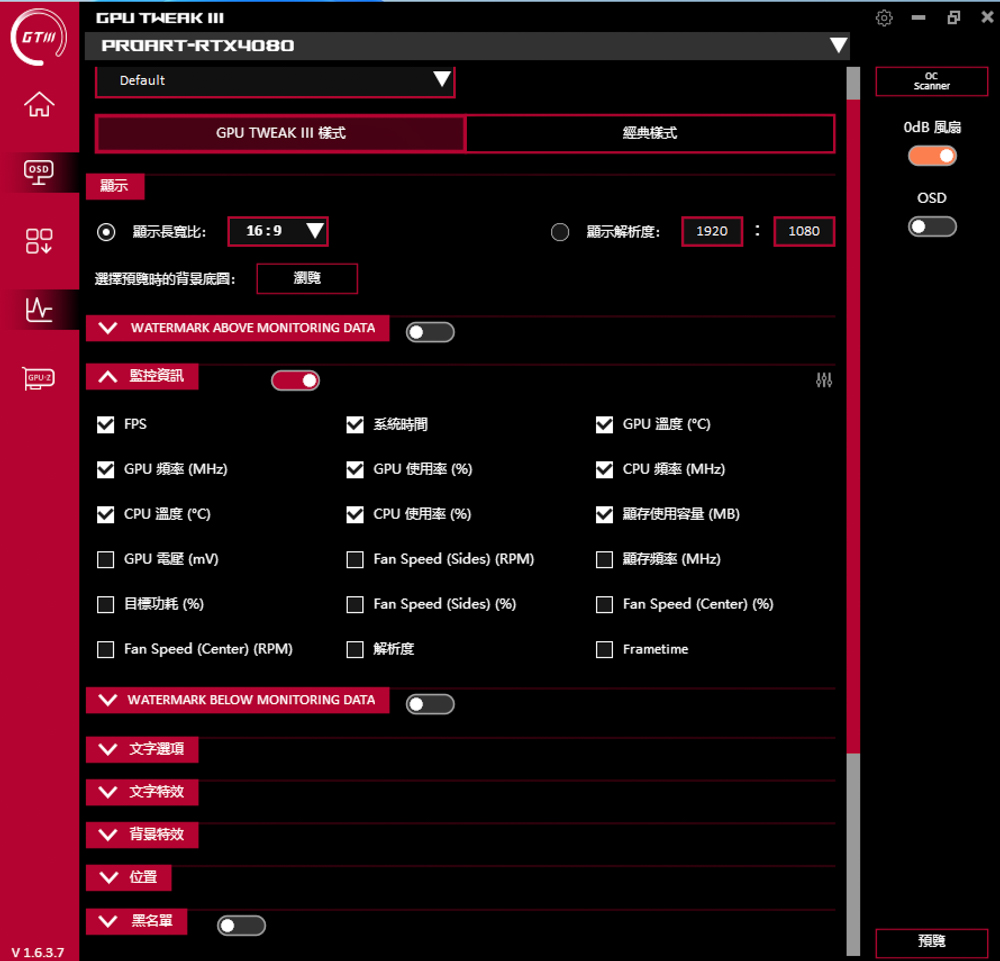
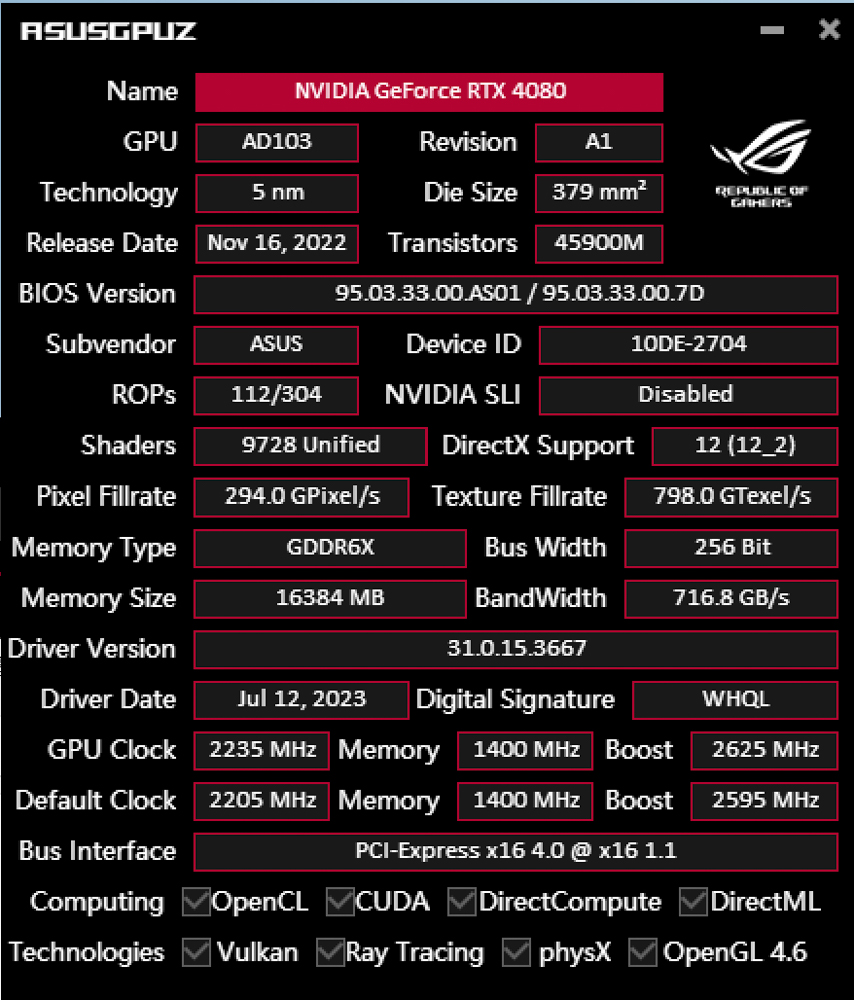
Graphics card professional creation and rendering tests
In evaluating the performance of the ASUS ProArt GeForce RTX 4080 16GB OC graphics card, a comprehensive suite of professional testing software was utilized, covering various fields and functionalities. Many of the tests include rendering, video clip conversion, and other performance metrics. The software list includes:
- OctaneBench 2020.1.5
- Indigo Bench
- Blender Benchmark
- SPECviewperf 2020 v3.1
- Superposition 2017
- UL Procyon benchmark
- Vray5
- Geekbench 6
These tools collectively offer a diverse and rigorous assessment, providing valuable insights and reference points for potential users.
For the test platform, the setup consisted of the following components:
- Processor: Intel i7 13700
- Motherboard: BIOSTAR Z790 VALKYRIE (BIOS version Z79AC510)
- Memory: T-Force DELTA RGB DDR5 6200 MT/s 16GBx2 (dual-channel)
- Graphics Card: ASUS ProArt GeForce RTX 4080 16GB OC
Within the BIOS, both XMP 3.0 and Resizable Bar were enabled, and the overclocking mode was activated in GPU Tweak III, setting the graphics card to run at a frequency of 2625 MHz for the tests. The GeForce Game Ready 536.67 driver version was downloaded to ensure optimal performance during the tests.
The results of these tests would offer a well-rounded perspective on the graphics card’s capabilities in both professional and gaming scenarios, demonstrating its ability to meet diverse demands in different contexts.
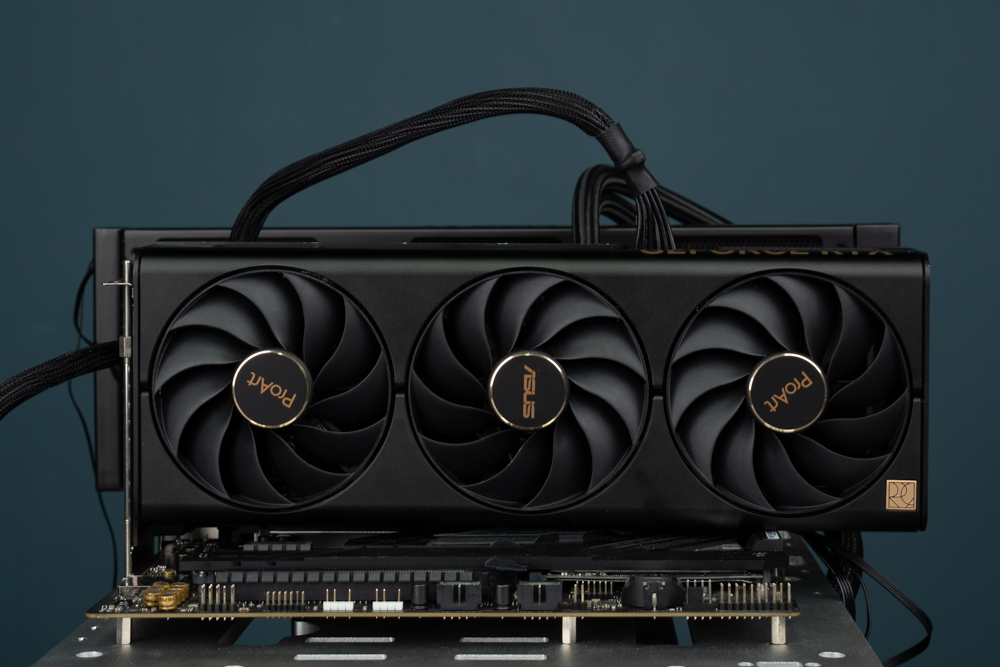
The test platform for evaluating the ASUS ProArt GeForce RTX 4080 16GB OC graphics card includes a robust set of components to ensure an accurate and comprehensive assessment. The specifications are as follows:
- Processor: Intel Core i7 13700
- Cooling System: TCOMAS SJ-A100E Gu Diao 360 ARGB 2.0
- Motherboard: BIOSTAR Z790 VALKYRIE (BIOS version: Z79AC510)
- Memory: T-Force DELTA RGB DDR5 6200 MT/s 16GBx2
- Graphics Card: ASUS ProArt GeForce RTX 4080 16GB OC
- Operating System: Windows 11 Professional Edition 21H2
- System Disk: Corsair MP600 PRO LPX 1TB PCIe Gen4 x4 NVMe M.2 SSD
- Game Disk: GIGABYTE AORUS NVMe Gen4 SSD 2TB
- Power Supply: FSP Hydro G PRO ATX3.0 (PCIe5.0) 850W
- Graphics Card Driver: GeForce Game Ready 536.67
Additional specifications for the RTX 4080 graphics card, as checked through GPU-Z, include:
- Process Technology: 5 nm
- CUDA Cores: 9728
- Memory: 256-bit, 16384 MB GDDR6X (Micron)
- GPU Default Clock: 2205 MHz
- Boost Clock: 2595 MHz
These details describe a state-of-the-art system designed to push the graphics card to its limits and provide a complete understanding of its capabilities. The data obtained from this test platform would be beneficial for users considering the ASUS ProArt GeForce RTX 4080 16GB OC for professional multimedia work, gaming, or other high-performance applications.
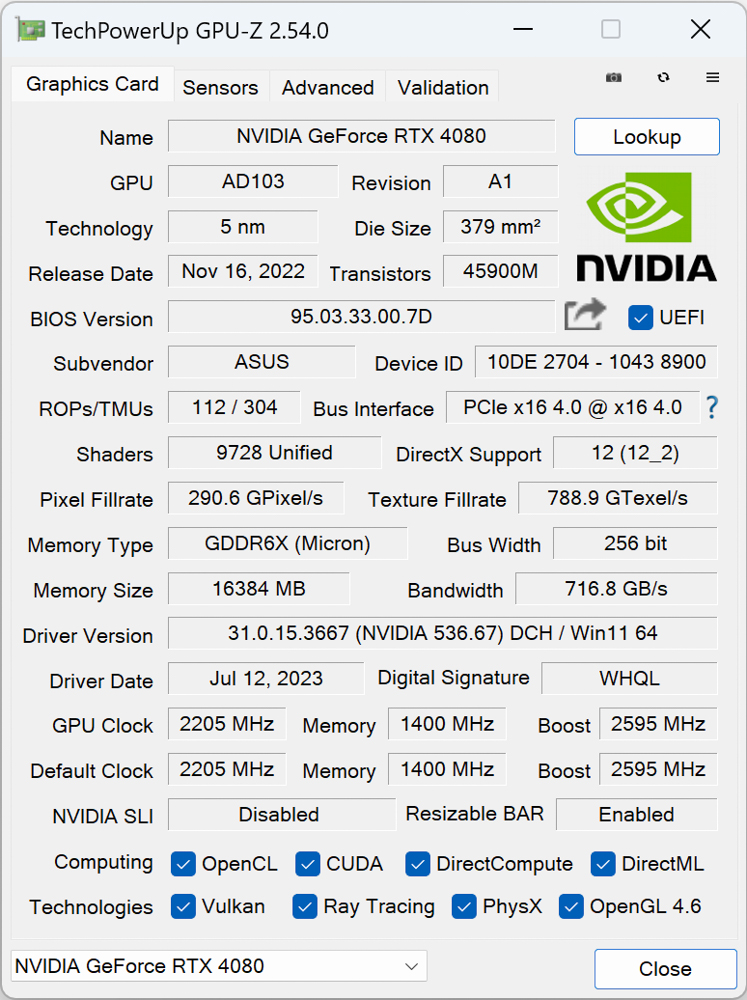
OctaneBench 2020.1.5, a benchmarking test, was created using the OctaneRender GPU rendering engine. It allows users to utilize the complimentary OctaneBench to evaluate and compare the rendering capabilities of different graphics cards. Starting with version 2020.1.1, OctaneRender introduced ray tracing effects, making it possible to enable RTX acceleration in OctaneBench 2020.1 for NVIDIA RTX series graphics cards. The performance boost in ray tracing rendering tasks provided by the RTX series was substantial, achieving a score of 965.73 points in this assessment.
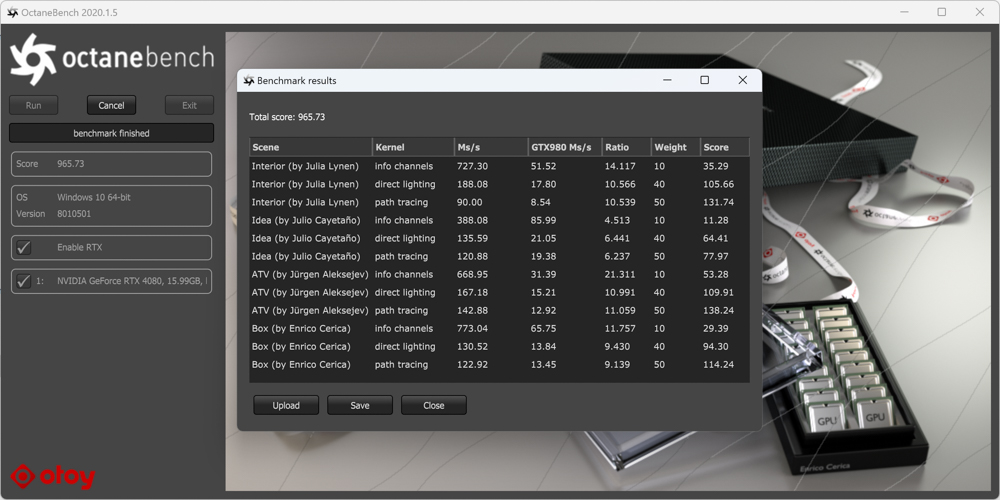
Indigo Bench is a complimentary testing tool that leverages the Indigo 4 rendering engine and uses the OpenCL architecture. This allows it to support NVIDIA, AMD, and Intel graphics cards and processors for evaluating rendering performance. Two sample projects, featuring a bedroom and a sports car, are provided for rendering during the test. Performance is measured in a unit called score, where rendering per second is quantified, so a higher score indicates better performance. In this context, the bedroom project achieved a score of 25.578 (M samples/s), while the sports car project scored 64.523 (M samples/s).
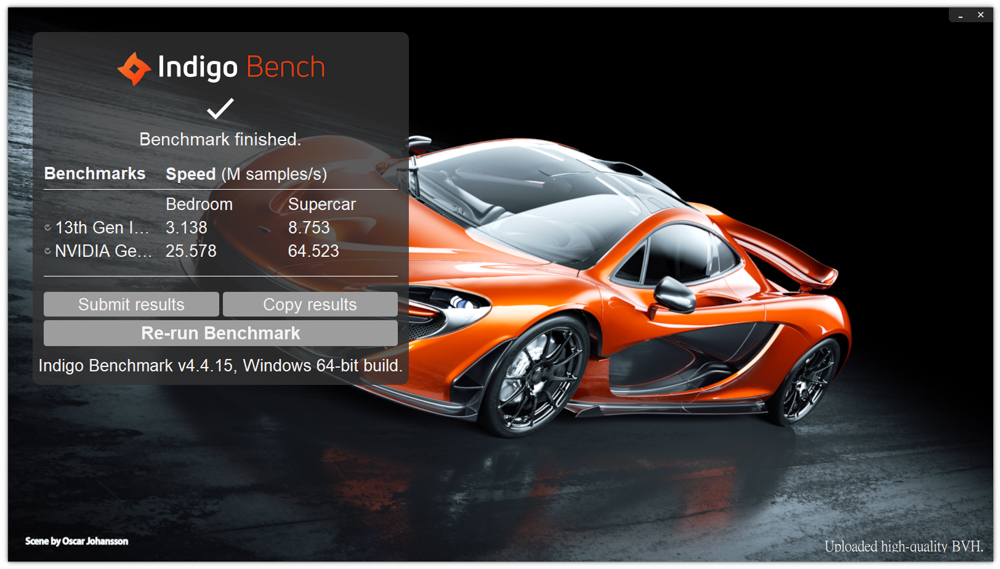
Blender Benchmark Launcher 3.6.0 is a no-cost benchmarking tool offered by the 3D graphics software Blender. Within the benchmark, users have the option to test either their CPU or GPU performance. The evaluation is conducted across three specific scenarios: monster, junkshop, and classroom, allowing for a comprehensive analysis of the system’s capabilities.
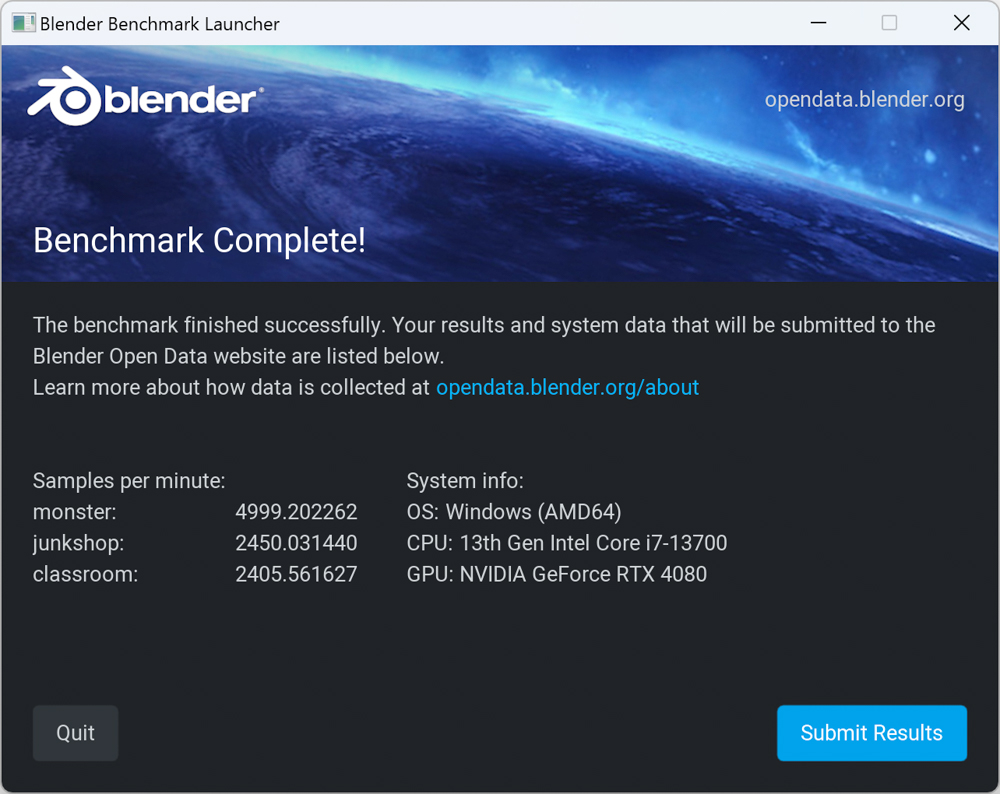
SPECviewperf 2020 v3.1 encompasses 3D graphics and rendering software used across diverse professional domains. This testing software utilizes both OpenGL and DirectX API to conduct simulations of 3D graphics performance. In this iteration, the testing items are performed at a 4K quality resolution of 3840×2160, and they include various applications and platforms such as 3ds Max, CATIA, Creo, Energy, Maya, medical-related rendering, snx, SolidWorks, and more.
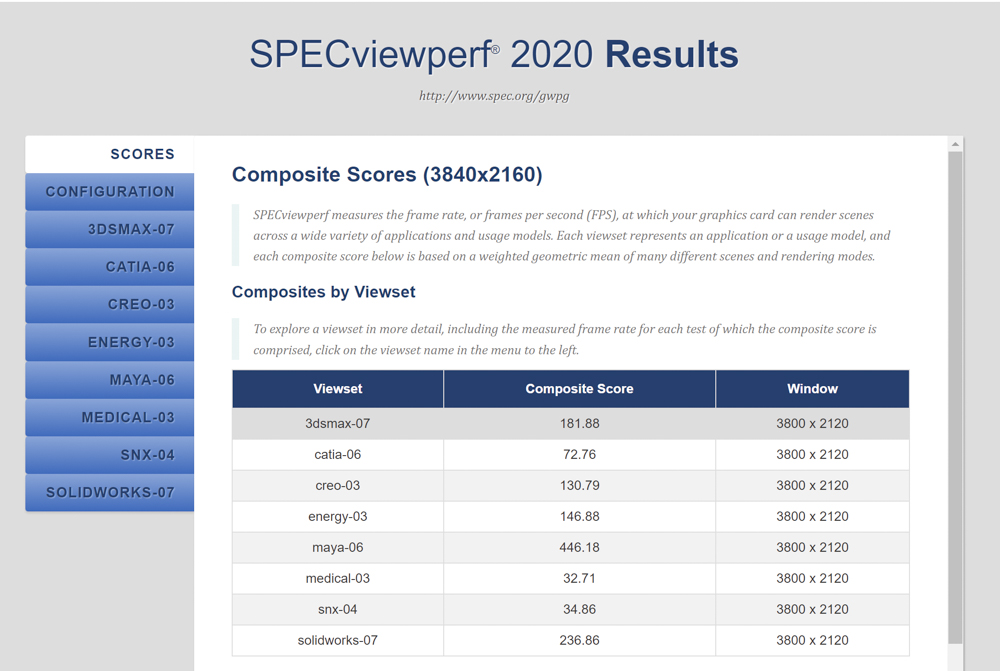
Superposition 2017 is a benchmarking tool that operates on the UNIGINE 2 engine, which is frequently utilized in the creation of simulators, cross-platform games, virtual reality applications, and 3D construction software. This engine supports Graphics APIs including OpenGL 4, Vulkan, and DirectX 12. Users can conduct tests on Graphics API options within the benchmark by selecting DirectX and choosing either 4K or 8K image quality for actual measurement. The results of these tests were 22279 points with an average FPS of 166.64 in the 4K project, and 8421 points with an average FPS of 62.99 in the 8K project.
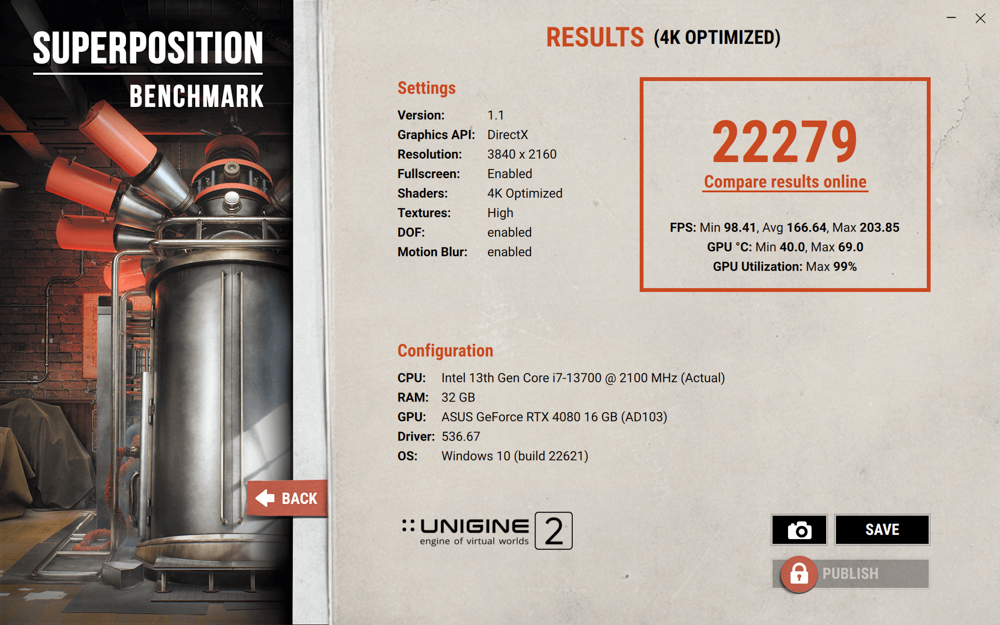
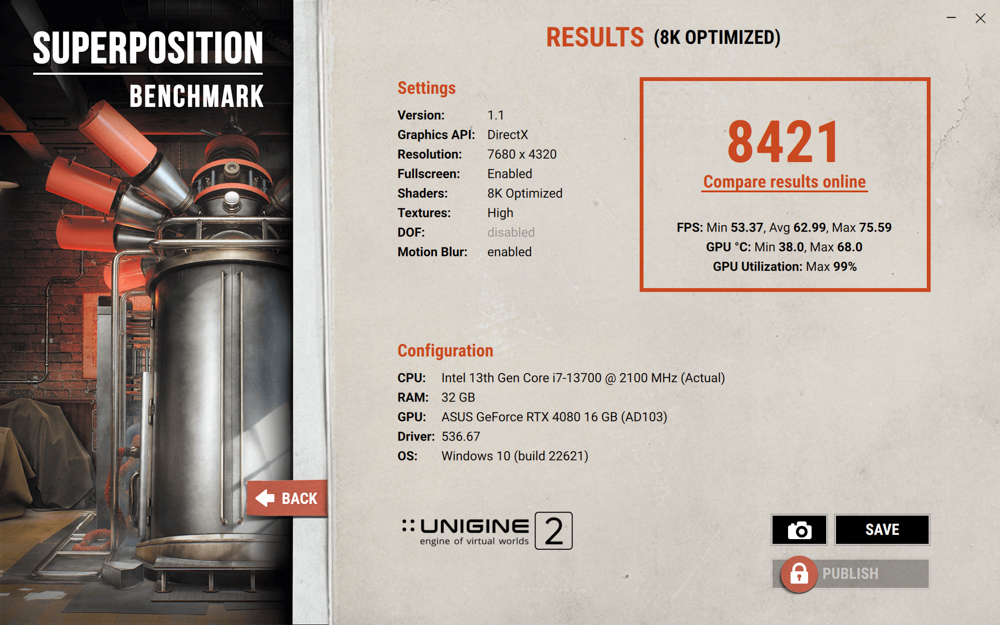
UL Procyon is a benchmarking tool that utilizes two specific tests for evaluating performance: the Video Editing Benchmark and the Photo Editing Benchmark, both leveraging Adobe software.
The Video Editing Benchmark utilizes Adobe Premiere Pro on the computer for testing video editing capabilities. Unlike other tools, Adobe Pro has never had a standardized testing reference, so this benchmark provides a unified approach. Within the test, two video files are initially imported, edited, and adjusted. After applying special effects, the output is tested using H.264 (YouTube 1080P) or H.265 (4K) to determine the total score.
The Photo Editing Benchmark consists of two main parts. The first part involves importing a digital negative (Digital Negative) into Adobe Lightroom Classic, where it tests actions like cropping, stretching, and modifying the DNG image. The second part uses Adobe Photoshop to apply layer editing effects to multiple images, and then exports the results to derive image retouching scores or batch processing scores.
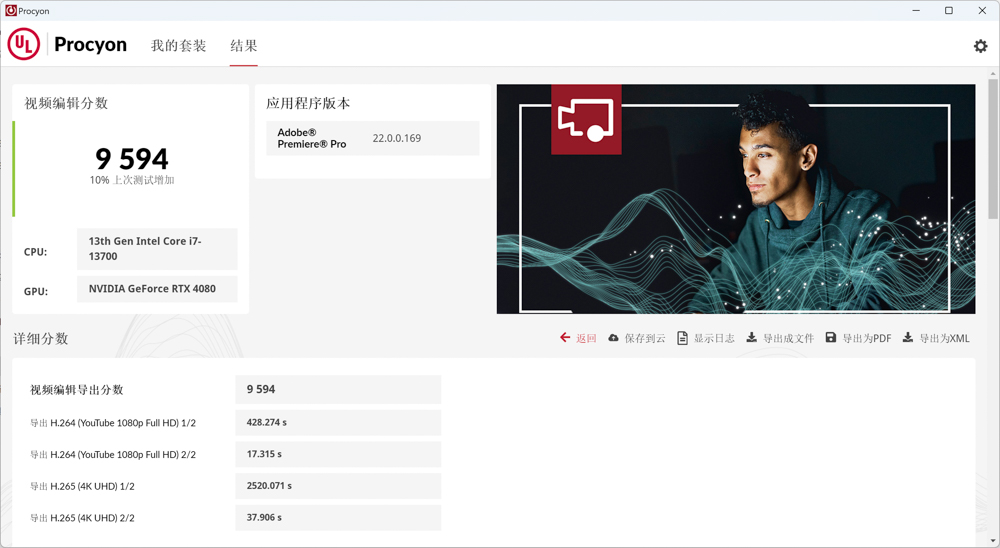
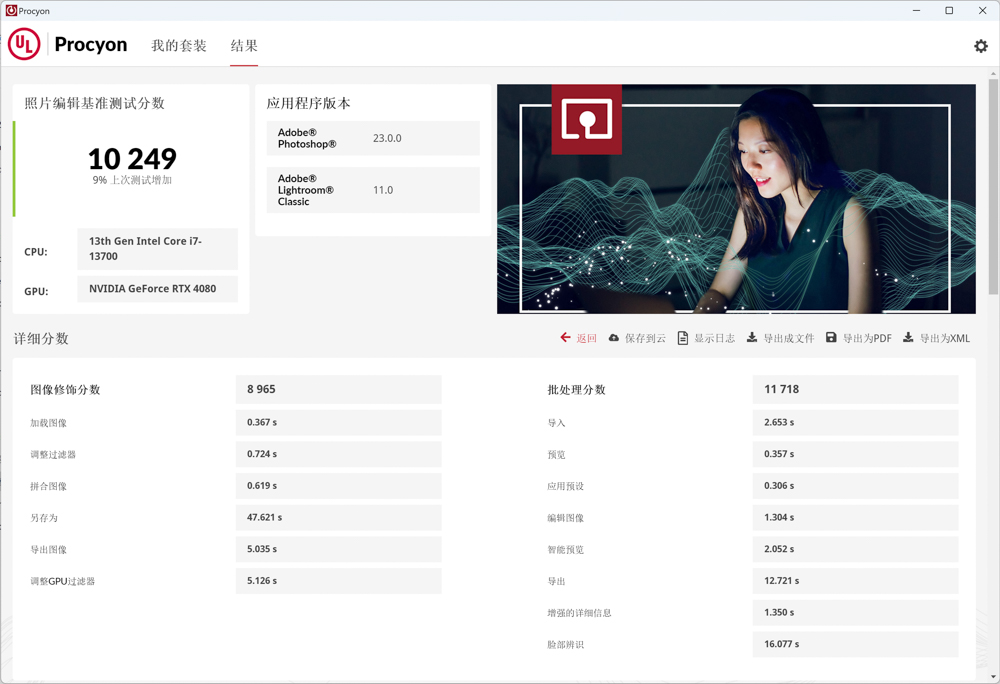
V-Ray 5 is a rendering software that features a testing tool developed by Chaos Group for the V-Ray engine. With the free Benchmark tool, users can evaluate the rendering speed of both CPU and GPU on the V-Ray engine. In V-Ray GPU CUDA projects, both CPU and GPU can render simultaneously, though they can also be tested separately. The V-Ray GPU RTX project is specifically designed to be compatible with NVIDIA RTX series graphics cards, allowing for specialized ray tracing rendering tests.
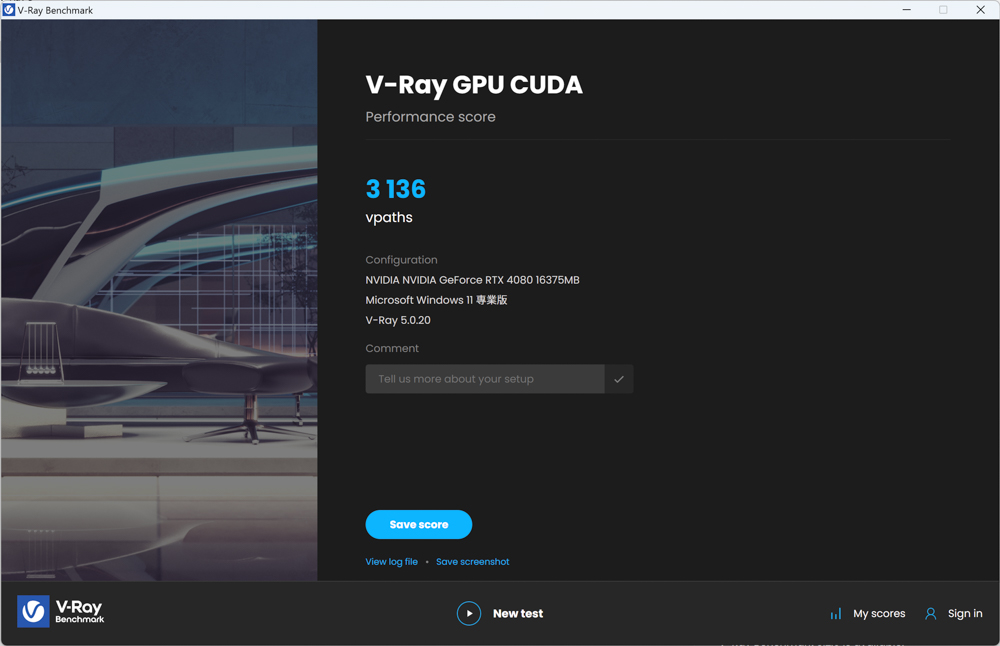
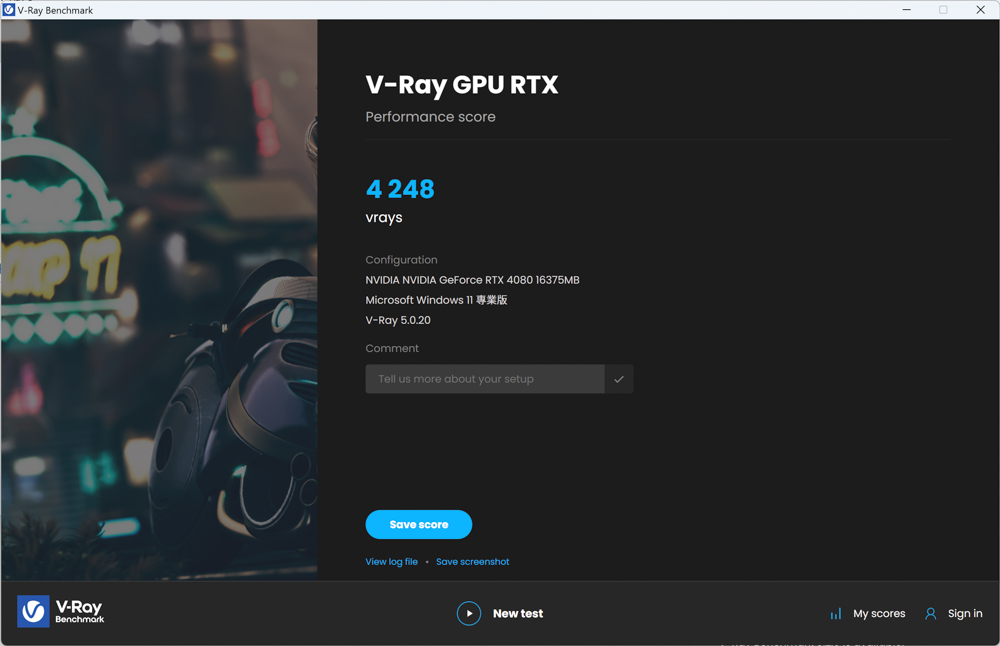
Geekbench 6 offers integrated CPU and GPU benchmark tests, including a specific GPU Compute Benchmark project. This project is designed to assess the professional performance of graphics cards in various fields such as image processing, rendering, machine learning (ML), and other specialized scenarios.
During the testing process, the software evaluates performance through a wide array of tasks such as deep learning workload, background blur, face detection, image editing, level detection, edge detection, Gaussian blur, image synthesis, feature matching, stereo matching, particle physics, and many other items to derive a total score.
Users have the flexibility to choose between OpenCL or Vulkan as the GPU API for conducting these tests, allowing for a comprehensive understanding of the graphics card’s capabilities in diverse professional contexts.
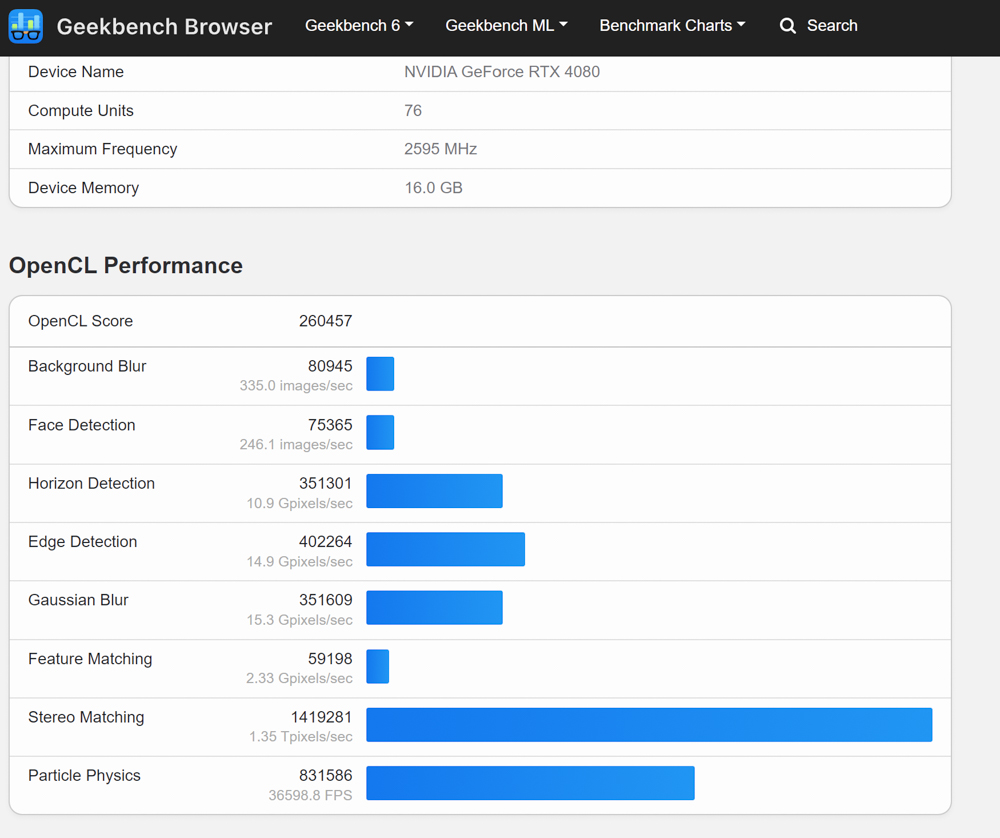
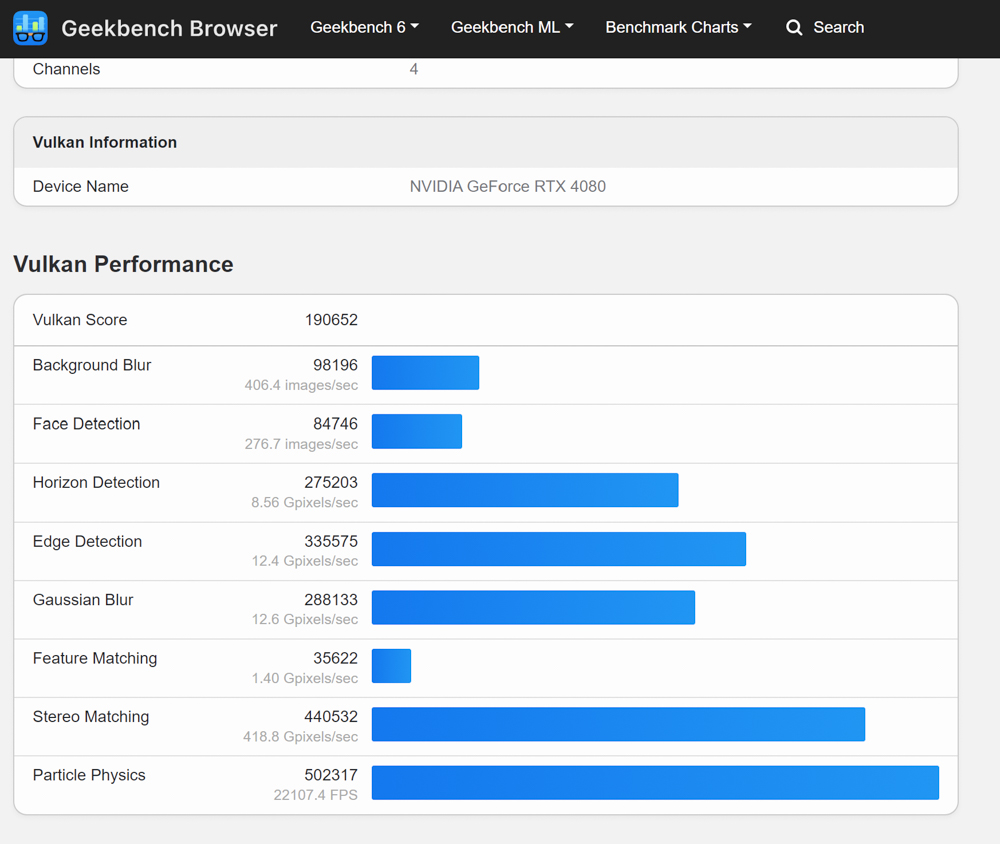
3DMark running score test
Next in line for testing is the 3DMark software, which is presently regarded as one of the most representative tools for evaluating graphics card performance in gaming. A series of tests are conducted on graphics cards at various image qualities and aspects, using the GeForce Game Ready 536.67 version driver for running. XMP and Resizable Bar features are also enabled during the tests.
3DMark’s Fire Strike test uses the DirectX11 GPU API and consists of two main tests: a physics test and a combined CPU and GPU test. These assess game performance under three image quality settings: 1080p, Extreme 1440p, and Ultra 2160p.
- At 1080P resolution, the total score was 50211, with a graphics card score of 66407.
- For the 2K 1440p quality setting in Fire Strike Extreme, the total score was 32066, with a graphics card score of 34013.
- Finally, at a more demanding 4K 2160p quality setting in Fire Strike Ultra, the total score was 17605, with a graphics score of 17348.
These scores provide a comprehensive insight into the graphics card’s performance across varying resolutions and quality settings.
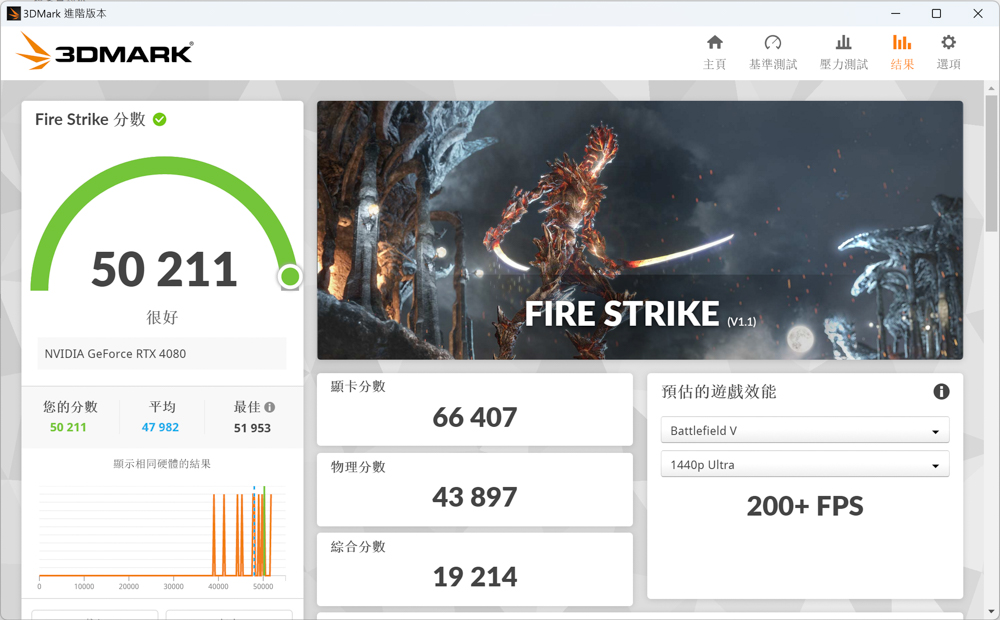
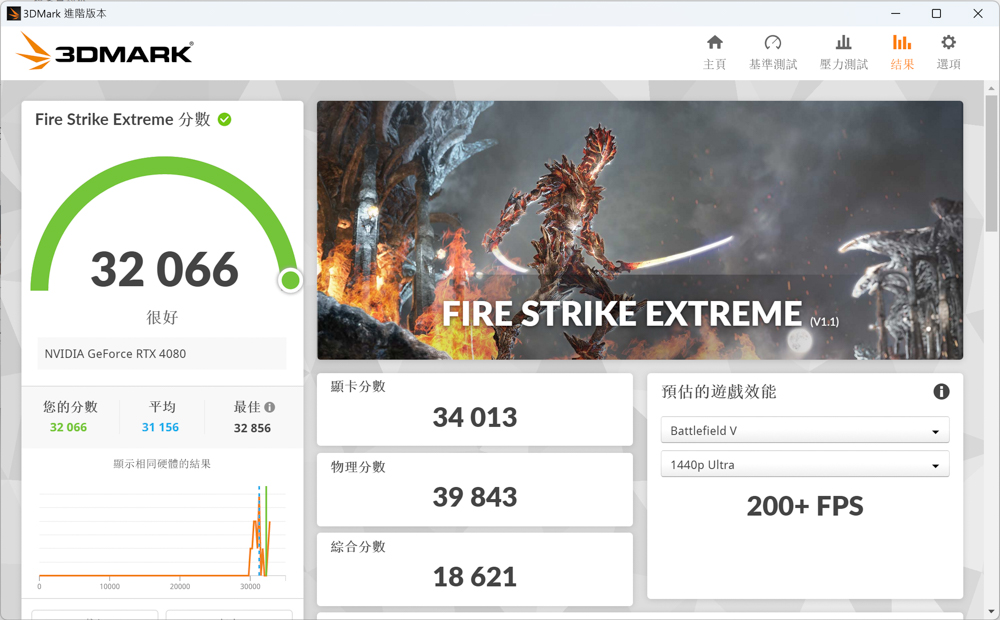
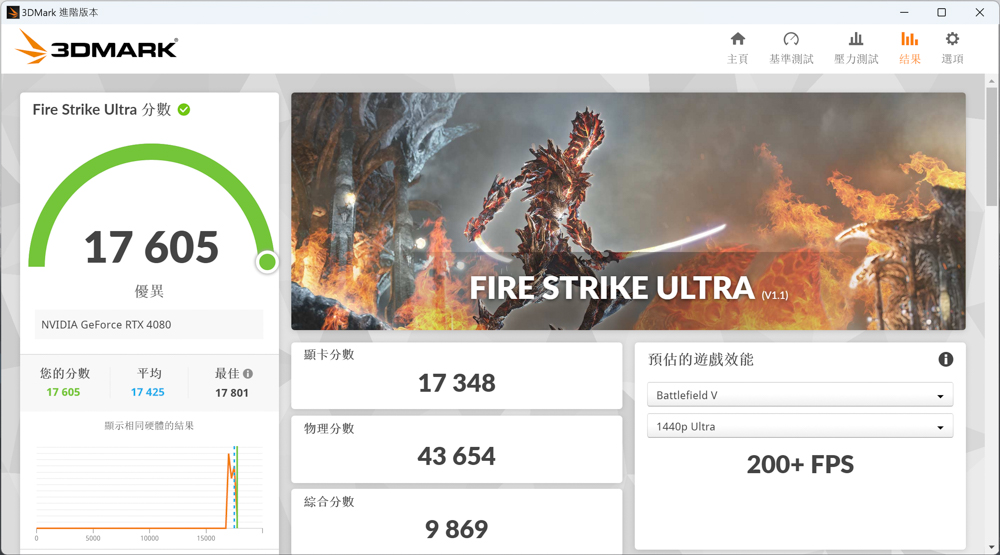
3DMark Time Spy, utilizing the DirectX 12 GPU API, is another game-focused benchmark test. It offers testing at two resolutions: 2K 1440p and a more demanding 4K 2160p Time Spy Extreme project to assess game performance.
- In the standard Time Spy project, the results showed a total score of 26902, with a specific graphics card score of 28481.
- In the Time Spy Extreme project, designed to test performance at 4K 2160p, the total score was 13221, with a graphics score of 14136.
These results further contribute to the overall understanding of the graphics card’s capabilities under different gaming scenarios and resolutions.
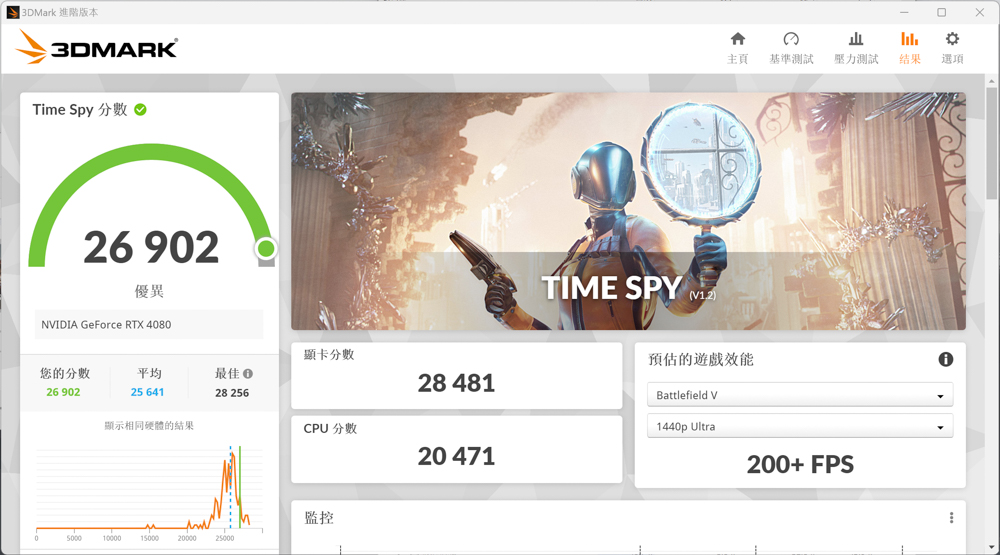
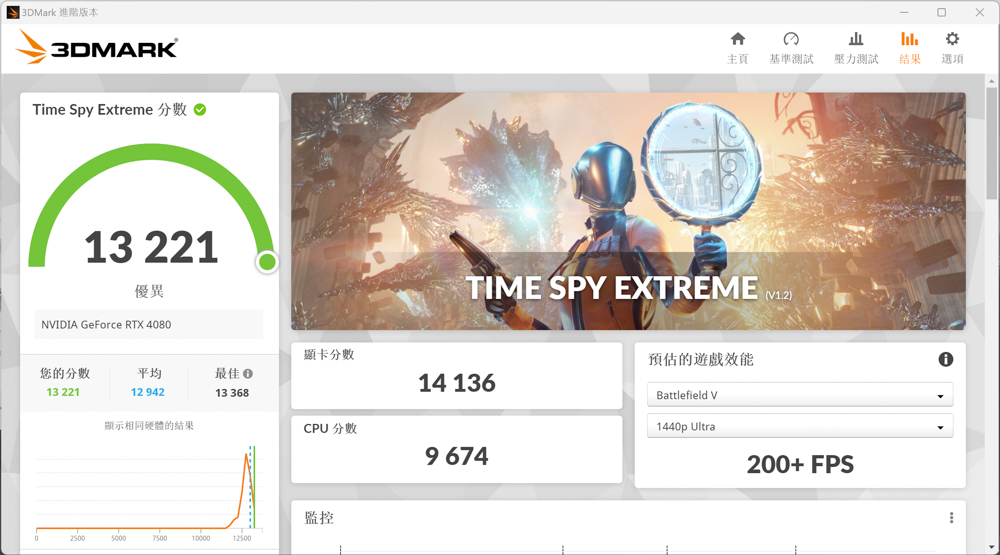
The Port Royal test is a part of the DirectX 12 DXR API, and it integrates real-time ray tracing (DirectX Raytracing) and DLSS (Deep Learning Super Sampling) into a 2K image quality test. It holds the distinction of being the first real-time ray tracing benchmark test specifically introduced for gamers. In the Port Royal test, a summary score of 18034 was achieved, further highlighting the graphics card’s capabilities in cutting-edge gaming technologies.
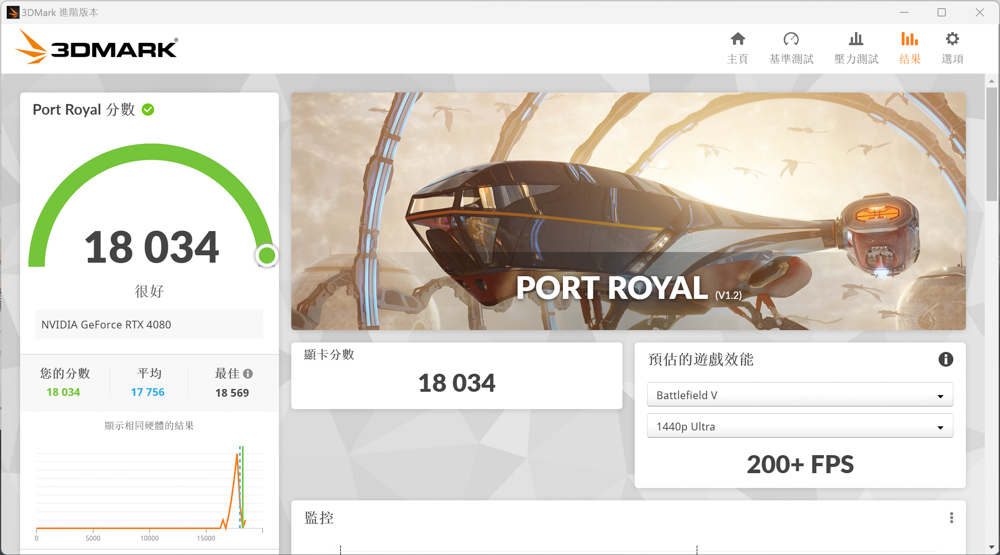
Speed Way is a benchmark developed using the most recent DirectX 12 Ultimate API. It incorporates cutting-edge technologies such as DirectX Raytracing tier 1.1 for real-time light tracing and global lighting, ray-tracing reflections, Mesh Shader, and more. As the latest ray-tracing game performance benchmark, it’s designed to provide players with an up-to-date reference for their gaming systems. In the Speed Way test, a score of 7291 points was achieved, reflecting the capabilities of the hardware in handling modern ray-tracing technologies.
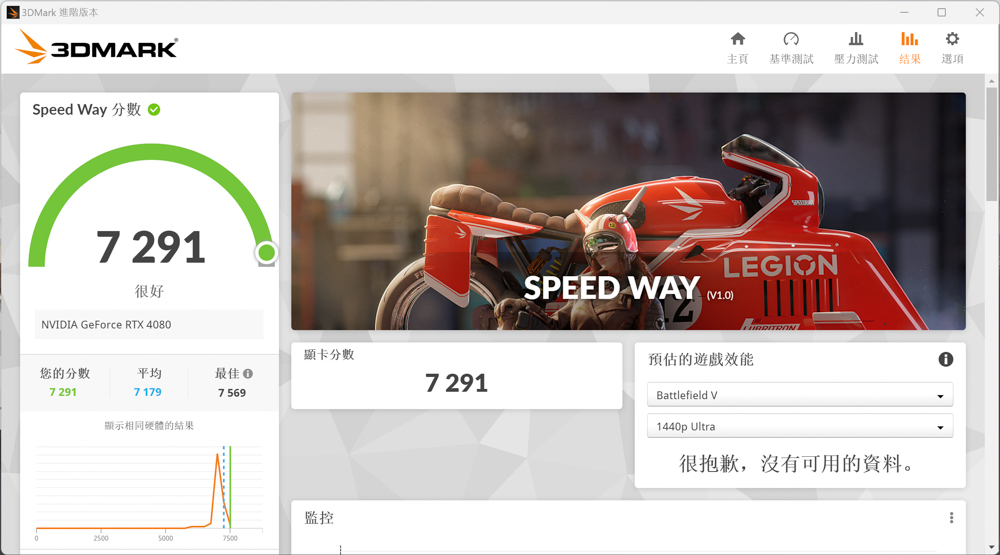
The 3DMark DLSS function test is designed to quickly assess the frame rate improvement brought by NVIDIA’s Deep Learning Super Sampling (DLSS) technology. By toggling the DLSS setting on and off, users can evaluate the performance gains. The test offers options to run with DLSS 3, DLSS 2, or DLSS 1, though it’s worth noting that only the latest NVIDIA RTX 40 series graphics cards support the DLSS 3 projects. Four resolution test comparisons are provided, including 1080p, 1440p, 4K, and 8K (the latter two are available only for DLSS 2/DLSS 3).
The benchmark test follows the same procedure as the Port Royal test, running twice to obtain the results. For 1080p, 1440p, and 4K resolutions, users can choose between Quality and Performance modes for DLSS, while the 8K resolution offers an additional Ultra Performance mode. In the author’s testing, the Performance mode was utilized for both 2K and 4K image qualities, and the Ultra Performance mode was selected for 8K image quality.
A frame rate (FPS) chart is provided, demonstrating the impact of enabling and disabling DLSS across different image qualities in the three DLSS versions for the graphics card, thereby providing a comprehensive view of how DLSS technology can enhance gaming performance.
Three FPS-type e-sports games test
For actual testing of FPS (First-Person Shooter) e-sports titles, three iconic games were selected, namely “Overwatch 2,” “Tom Clancy’s Rainbow Six Siege,” and “Apex Legends.”
Among these three FPS-type e-sports games, only “Tom Clancy’s Rainbow Six Siege” comes with a built-in performance test. For the other two games, frame data is collected within the shooting range. It’s important to note that “Apex Legends” is limited to 144 frames by default within the game. To achieve a higher frame number limit, manual code entry is required. Therefore, the author has chosen to test the “Apex Legends” frame number collection according to the game’s default settings. This approach ensures that the testing reflects the typical player experience and default game configurations.
The test of nine AAA masterpiece games
The author’s testing focuses on the experience of screen performance and storytelling within AAA-type games. For this purpose, nine prominent AAA titles were chosen: “Hogwarts Legacy,” “The Witcher 3: Wild Hunt,” “Cyberpunk 2077,” “Watch Dogs: Legion,” “Far Cry 6,” “God of War,” “Red Dead Redemption 2,” “Horizon Zero Dawn,” and “Assassin’s Creed Valhalla.”
Considering that the majority of players prioritize stunning visual quality over the highest frame rate when playing AAA masterpiece games, the author set the in-game “highest” texture and special effect options for these tests. In most of the nine games, NVIDIA’s Deep Learning Super Sampling (DLSS) technology was utilized, set to “Quality/Image Quality” mode. This setting aims to achieve a balance, allowing for some frame rate improvement while maintaining as much of the visual quality as possible.
To provide a comprehensive view of the performance, the frame rate collection included both average (AVG) frames per second and the 1% Low FPS value. These metrics offer insight into both the typical performance and the performance during the most demanding moments, ensuring an accurate reflection of the gaming experience across these visually-rich titles.
Five ray tracing games tested
The NVIDIA RTX 40 series graphics cards, which are equipped with the third-generation RT Core, have demonstrated enhanced ray tracing performance compared to the preceding RTX 30 series. Five ray tracing DXR (DirectX Raytracing) games were selected for testing: “Hogwarts Legacy,” “The Witcher 3: Wild Hunt,” “Cyberpunk 2077,” “Watch Dogs: Legion,” and “Far Cry 6.” In these tests, both the screen effects and ray tracing settings were set to the “Highest” quality, along with DLSS (Deep Learning Super Sampling) 3 in quality image mode, and AMD FSR (FidelityFX Super Resolution) in quality mode.
In the 2160p 4K resolution ray tracing real-time game testing project, the ASUS ProArt GeForce RTX 4080 16GB OC graphics card accomplished an overall average of 99.4 frames per second (fps). This achievement signifies that the demands of a 4K 100-frame real-time ray tracing gaming experience can be met without issue! The test results underscore the advancement in the new generation of graphics cards, showcasing their capability to handle demanding visual effects while maintaining a high frame rate.
Display card temperature and power consumption test
The graphics card was evaluated on an open test platform indoors at a temperature of 26°C to assess its temperature and power consumption. The author used “Cyberpunk 2077,” Time Spy, and Furmark for real-world measurements, and the data collection was carried out using HWiNFO64. This allowed for the recording of the highest GPU temperature (referred to as GPU temperature), graphics memory junction temperature (referred to as GPU Memory Junction Temperature), and GPU Power.
It’s worth noting that software monitoring for these parameters can have a deviation of 1 to 3%, so the data should only be used as a reference. These variations are common in such tests and should be taken into consideration when interpreting the results. This information can be valuable for users seeking to understand the thermal and power characteristics of the particular graphics card being assessed.
Summary
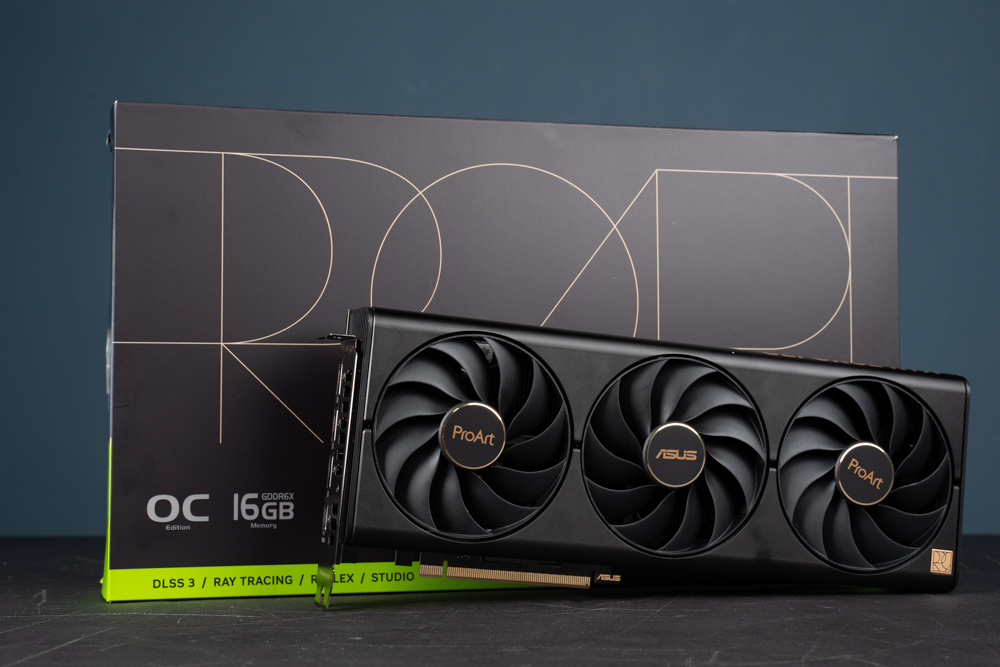
The ASUS Creator Series ProArt GeForce RTX 4080 16GB OC graphics card showcases a sophisticated and minimalist design, highlighted by a subtle matte black and gold color theme. Powered by NVIDIA’s Ada Lovelace architecture and the AD103-301-A1 GPU core, this card comes with 256-bit 16GB GDDR6X video memory. The NVIDIA RTX 4080 integrates 304 4th-generation Tensor Cores to enhance AI inference capabilities, and 76 3rd-generation RT Cores that double ray tracing performance. Features like AV1 hardware encoding and decoding, along with DLSS 3, promise more room for improvement in future multimedia and gaming applications.
With a three-fan, six-pipe cooling module, the ProArt GeForce RTX 4080 16GB OC maintains a compact length of 30 cm and a thickness of 2.5 slots. This makes it an appealing option for smaller mid-tower or ITX cases, and the temperature regulation ensures it stays at around 71°C. The card offers an ideal balance for gamers who have restricted space in their casing.
Its performance in various professional and gaming tests is commendable, and it doesn’t lag far behind other models. Though it’s branded as part of the “creator” series, the underlying core is still the potent NVIDIA RTX 4080. This card can meet multimedia or gaming requirements on a 4K screen and presents a more case-friendly installation volume compared to other models. Its versatility and design make it a compelling choice for both creators and gamers.
If this article is helpful for you, please share this article with your friends on social media. Thank you!
This article is based on the personality of the reviews. You are responsible for fact-checking if the contents are not facts or accurate.
Title: Unboxing Test of the Elegant Yet Understated Black Gold ASUS ProArt GeForce RTX 4080 16GB OC High-Quality Graphics Card